Deir Samaan دير سمعان
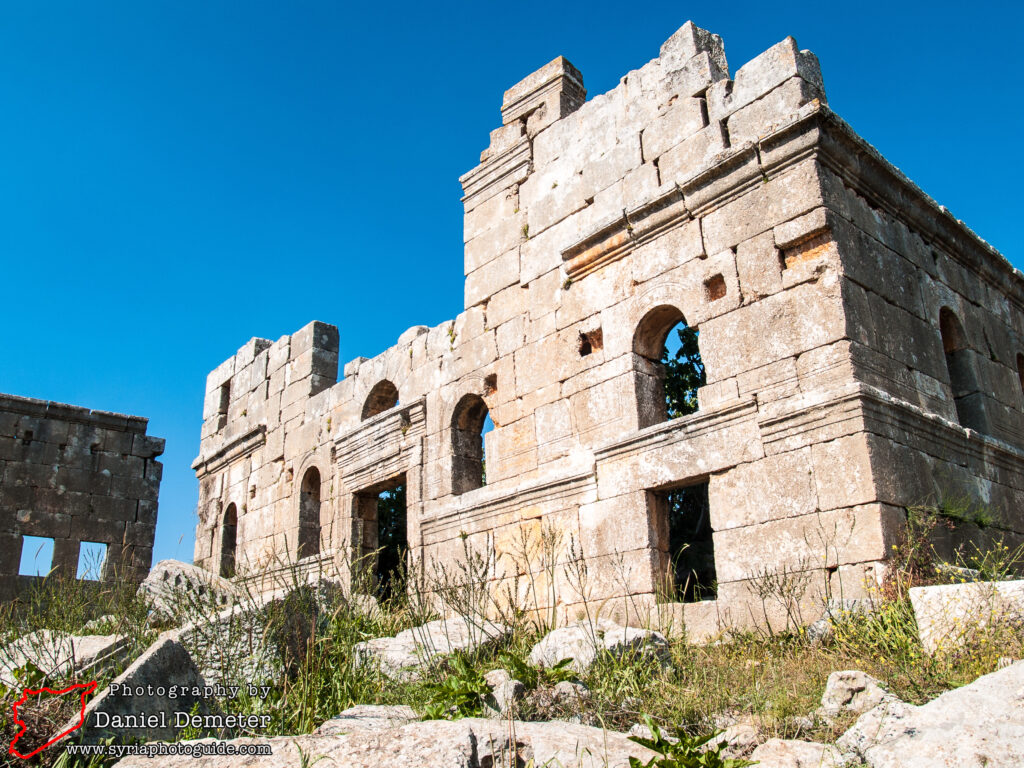
Deir Samaan (دير سمعان) is one of the most noteworthy Byzantine sites in the region, but is surprisingly overlooked by many visiting tourists. As neighboring Qalaat Samaan (قلعة سمعان) developed into a major center of pilgrimage, it was this town that provided services to those pilgrims, including accommodation. The village includes several inns, churches, monasteries and other buildings, many of which survive remarkably well preserved. The site should be considered a must on any itinerary that includes Jebel Samaan (جبل سمعان).
The town was originally an agricultural settlement known in Greek as Telanissos, meaning “mountain of women”. Settlers took advantage of two nearby fertile plains, and its location on the route between Apamea and Cyrrhus. In the beginning of the fifth century a monastery was established here, starting a transition for the village into a religious center. It attracted an ascetic from the province of Cilicia (now Adana, Turkey) who would later become famous as St. Simeon Stylites. He joined the monastery in 412, but soon left the community and took up residence on the hill above.
St. Simeon Stylites confined himself to a small platform perched on a tall pillar. As word of his religious devotion spread, his presence began to attract a stream of pilgrims. Simeon spent 37 years upon the pillar until his death in 459. After his death the site became a major center of pilgrimage, with Constantinople supporting its development. Additional hostelries and monasteries were constructed in the lower village, which was then connected to the huge new basilica on the hilltop by a triumphal way. The center continued to be mentioned as a pilgrimage destination until as late as the 12th century.
The ruins cover an extensive area, almost two thirds of a square kilometer. As you approach the site from the southeast, the first buildings visible (on the right) are the large pandocheion, or inn. This complex provided accommodation to visiting pilgrims, and a significant portion of the two buildings remain intact. The impressive size of the structures, adding up to seventy meters in length, reflect the scale of the pilgrimage at its height. Attached to the complex to the east is a small stone-carved chapel with several burial chambers.
Further along the road, on the left, is yet another pandocheion. This smaller inn was constructed earlier, dated by inscription to 479. This demonstrates that there was significant pilgrimage to the area within twenty years of St. Simeon’s death. Just south are the sparse remains of what was once a marketplace. The purpose of the building to the northeast is debated, but it is thought to have served some civic purpose, possibly an andron. It is believed to have been constructed in the fifth century. Up the hill to the west is an impressive residence of three floors, each with a colonnaded porch, that survives in remarkable condition.
Back to the east (right side) of the road, up the hill, is a monumental arch. This reconstructed gateway marked the beginning of the historic path ascending to Qalaat Samaan (قلعة سمعان) from the settlement. While it is possible to retrace some of that path, modern access to the hilltop is from the eastern side. Across the road to the northwest is the north church. This rather simple church is poorly preserved, though some of its western façade remains intact. The plan is typical of the late sixth century, with the addition of a tower above the chamber right of the apse and small portals each supported on two columns over the south and west entrances. The decoration of this church is restrained.
The two most impressive buildings of Deir Samaan (دير سمعان) are further to the west, on the opposite side of the modern village that has developed within the site. The northwest monastery is described by archaeologist Howard Crosby Butler as “an exceptionally fine group of buildings in a remarkable state of preservation”. The complex consists of an irregular collection of hostel buildings grouped around a mid-fifth century church. This church is the largest in the settlement, measuring 18 meters by 22 meters. East of the church was a burial ground with a rock-carved colonnaded court preceded by an entrance narthex. South of here, the southwest monastery consists of three colonnaded buildings around a courtyard. At least two of these buildings probably served as additional accommodation for pilgrims. The church is the best preserved of all the buildings at the site. This complex is dated to the sixth century.
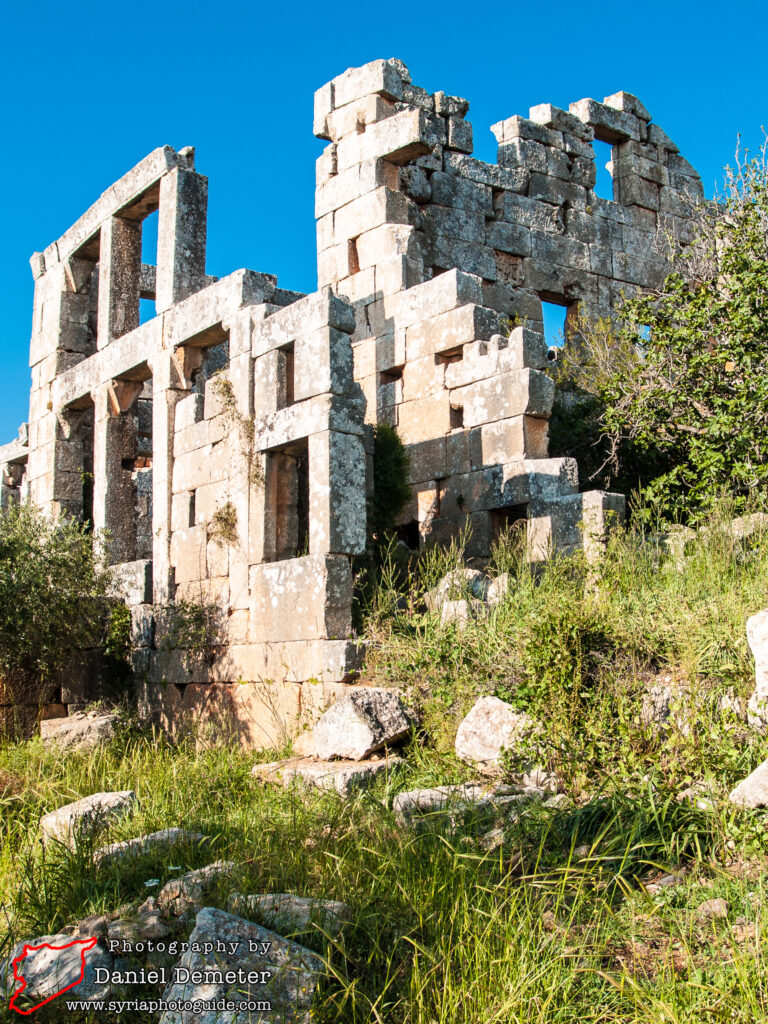
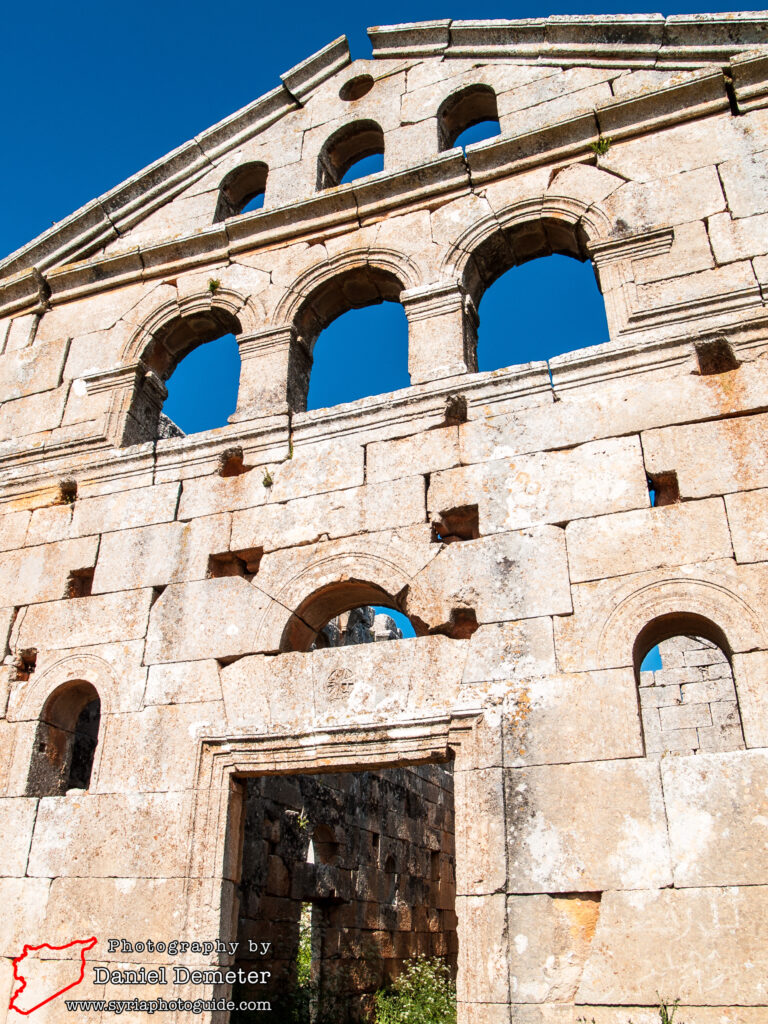
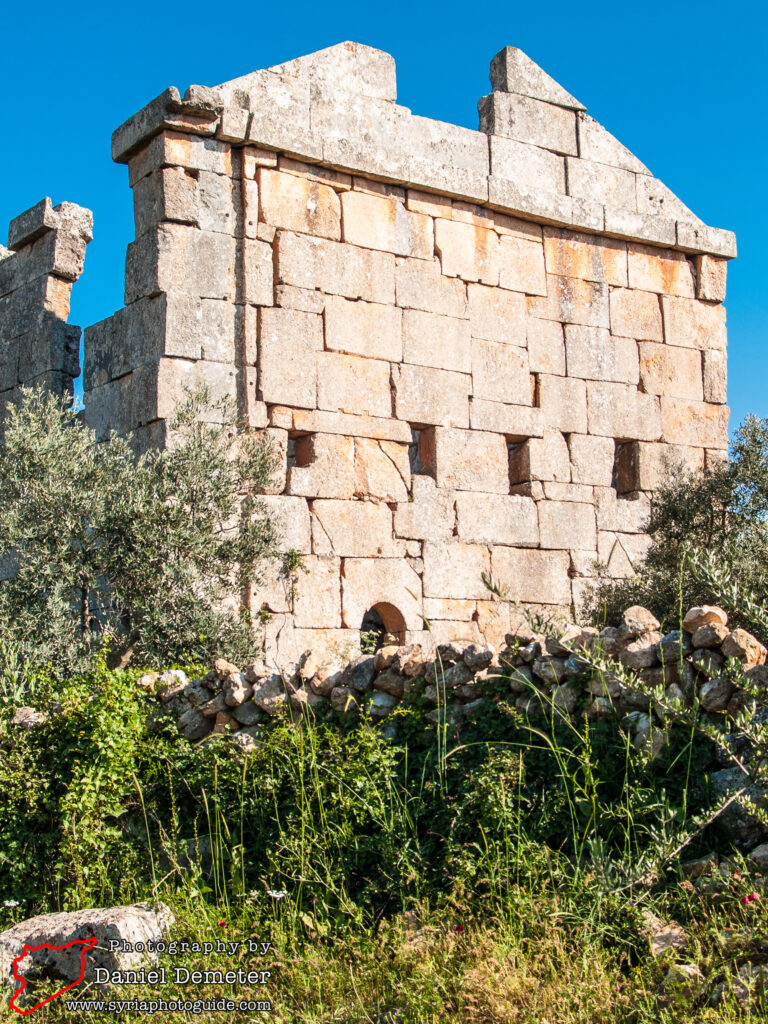
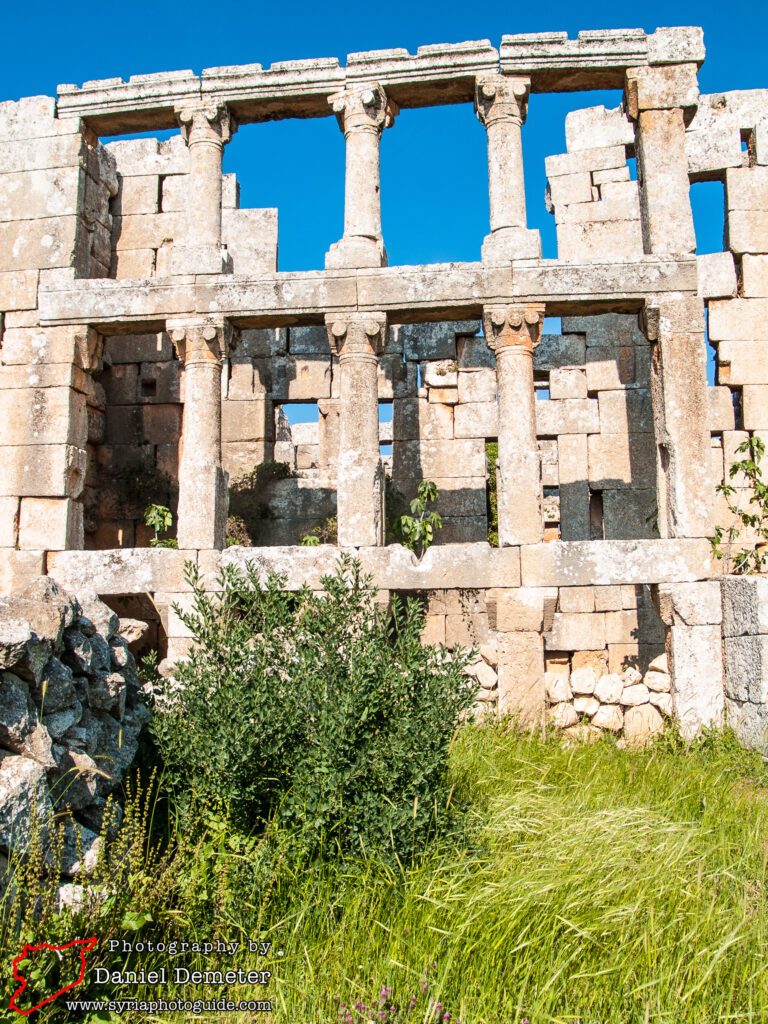
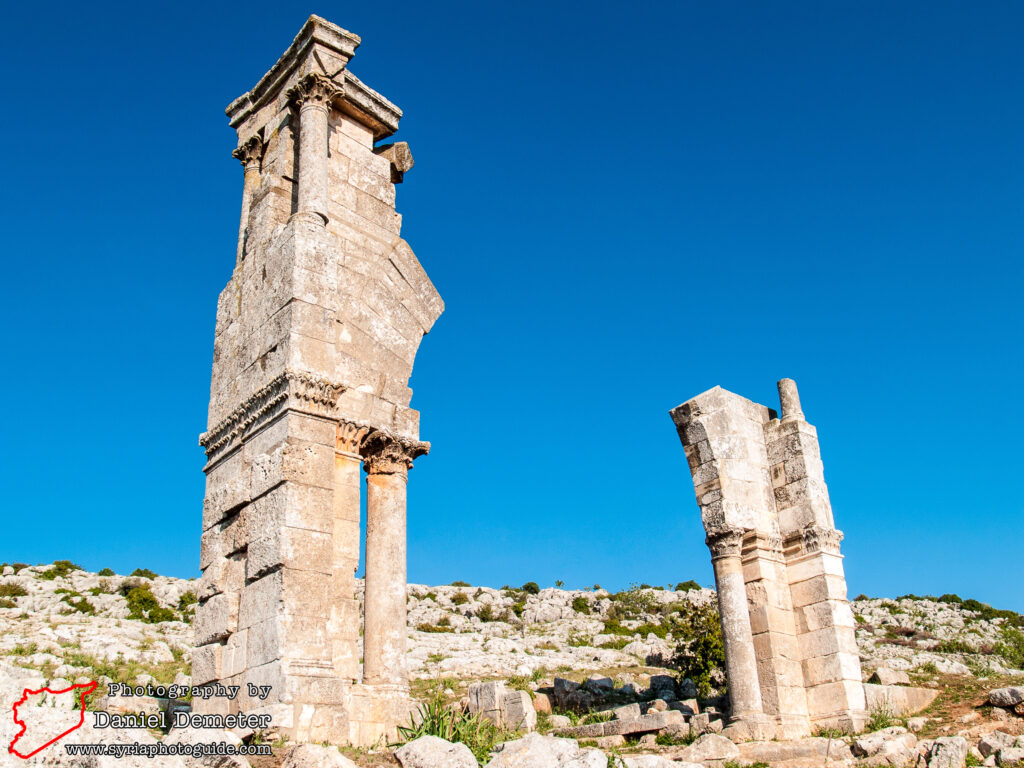
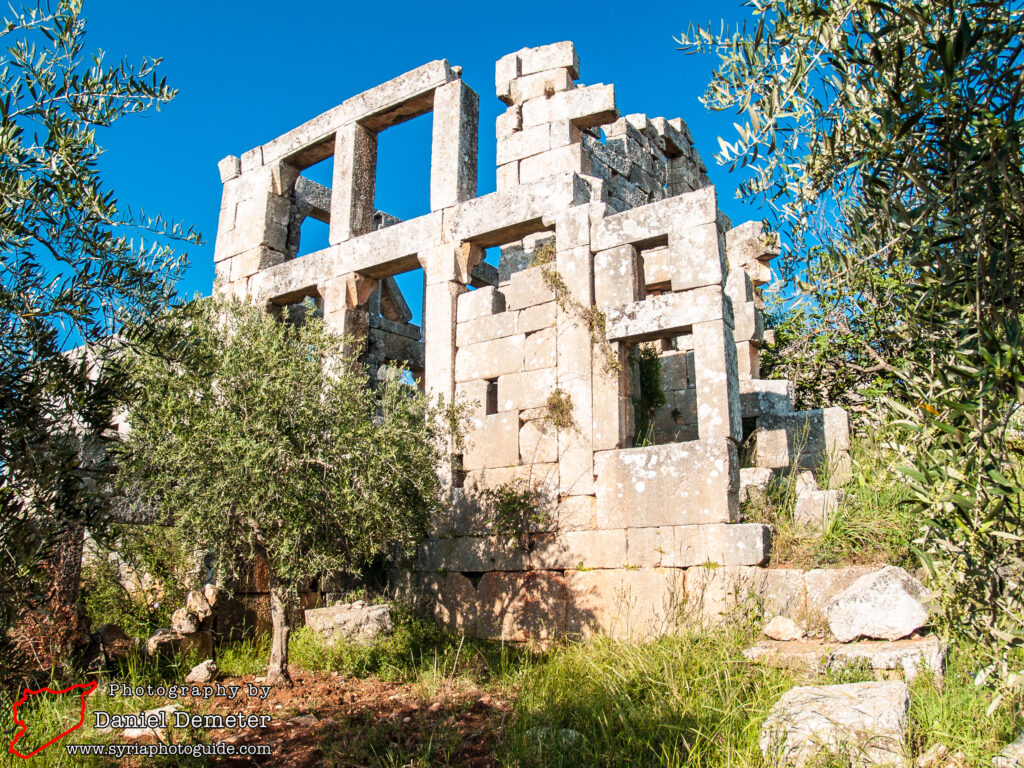
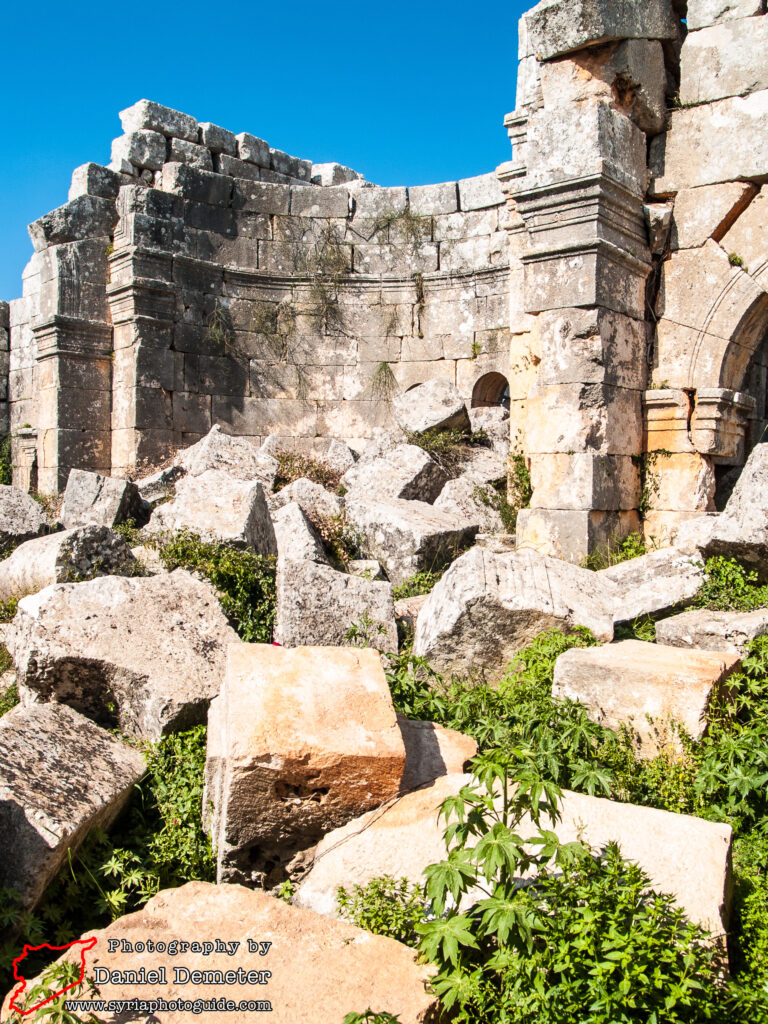
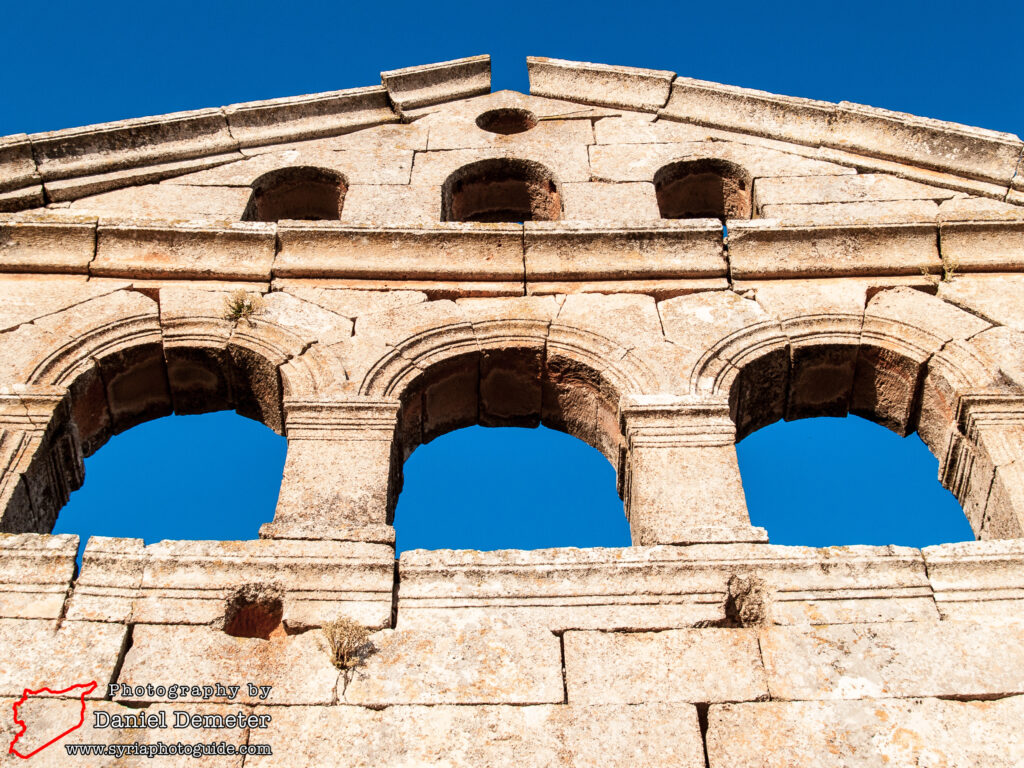
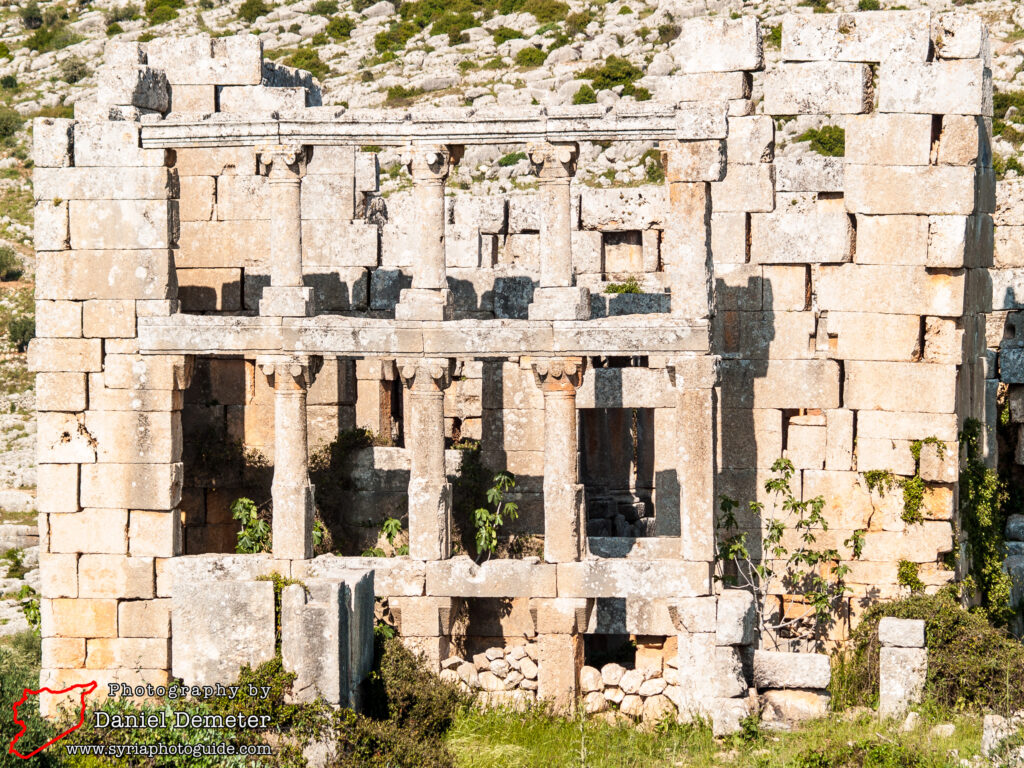
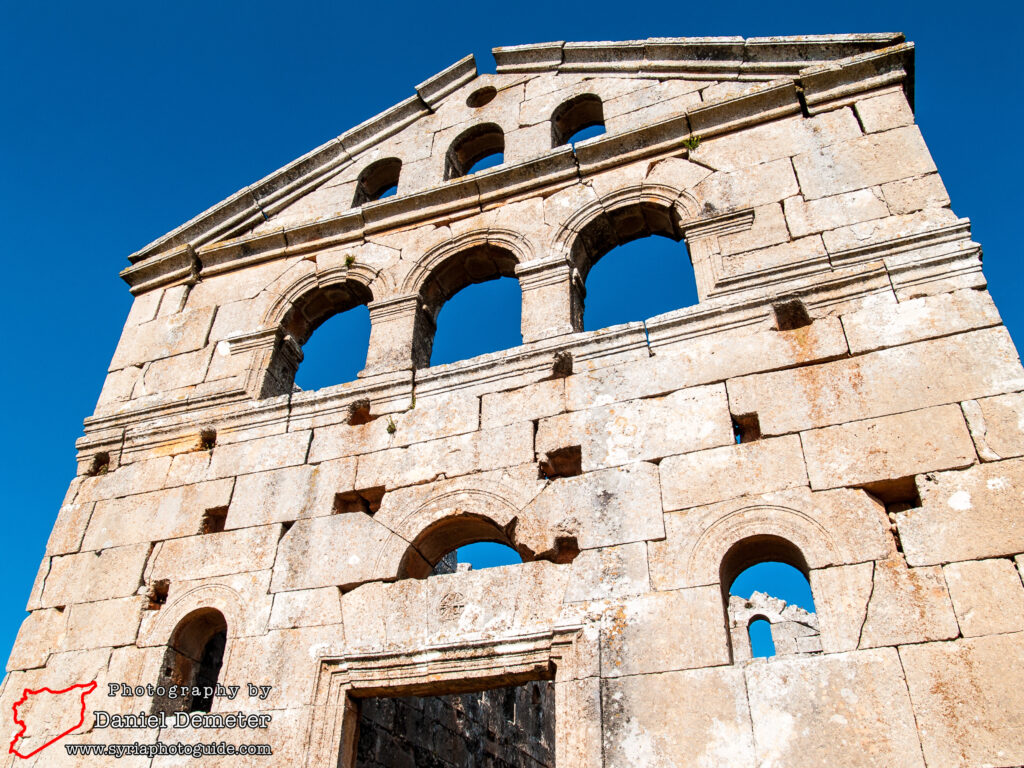
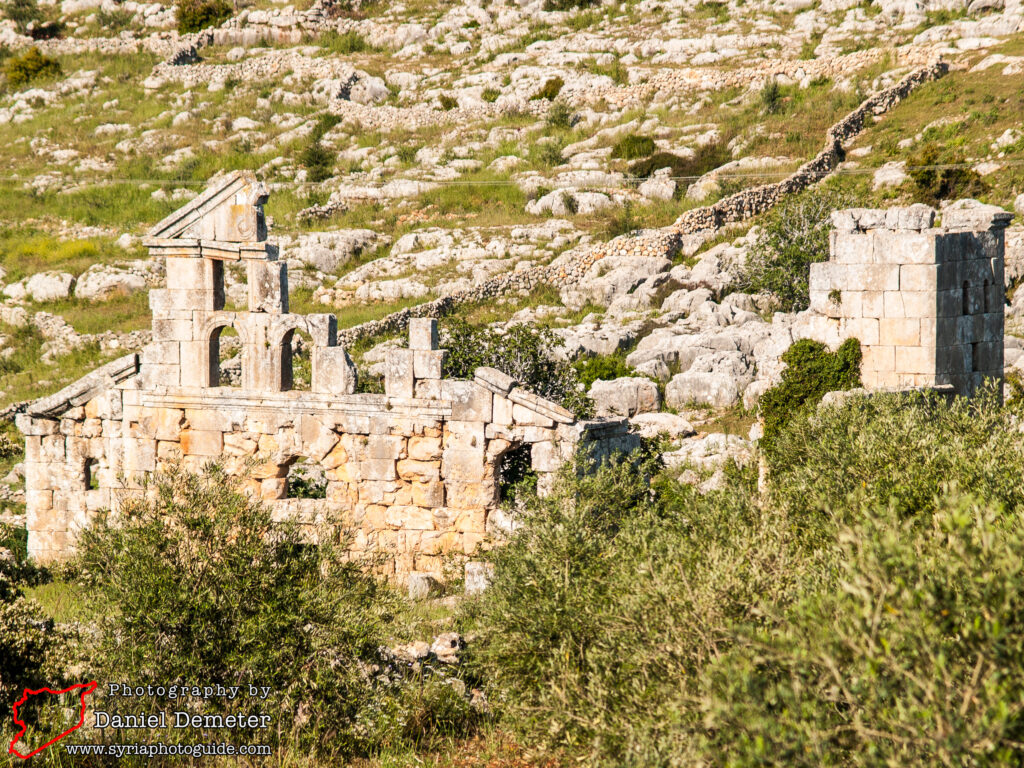
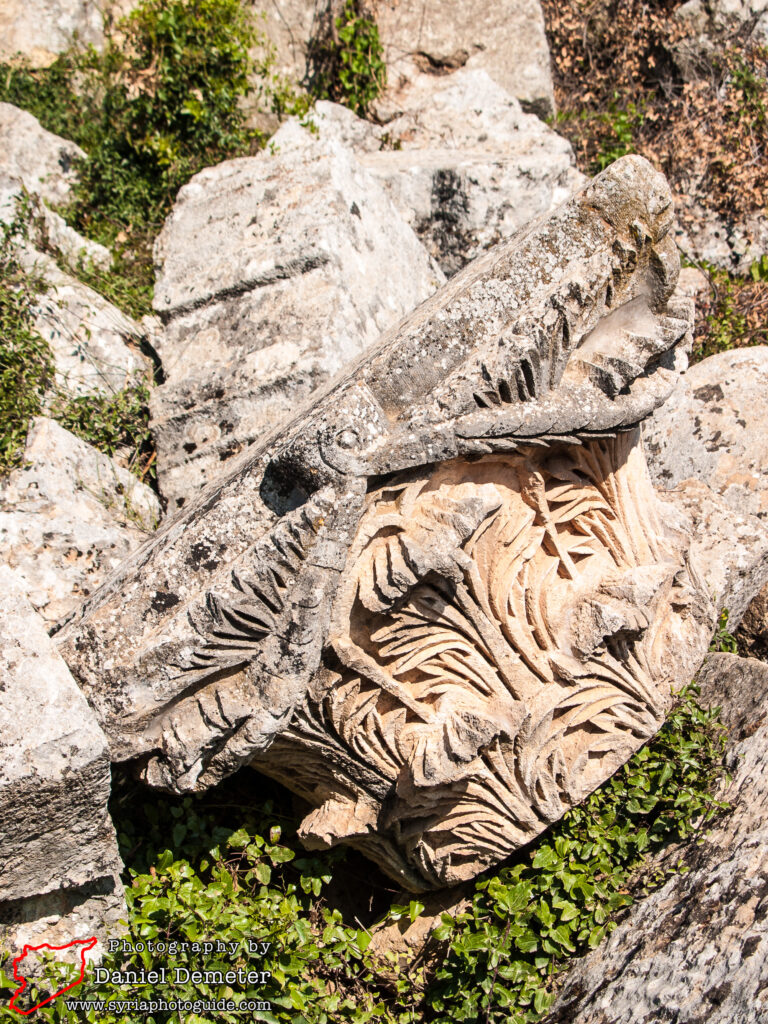
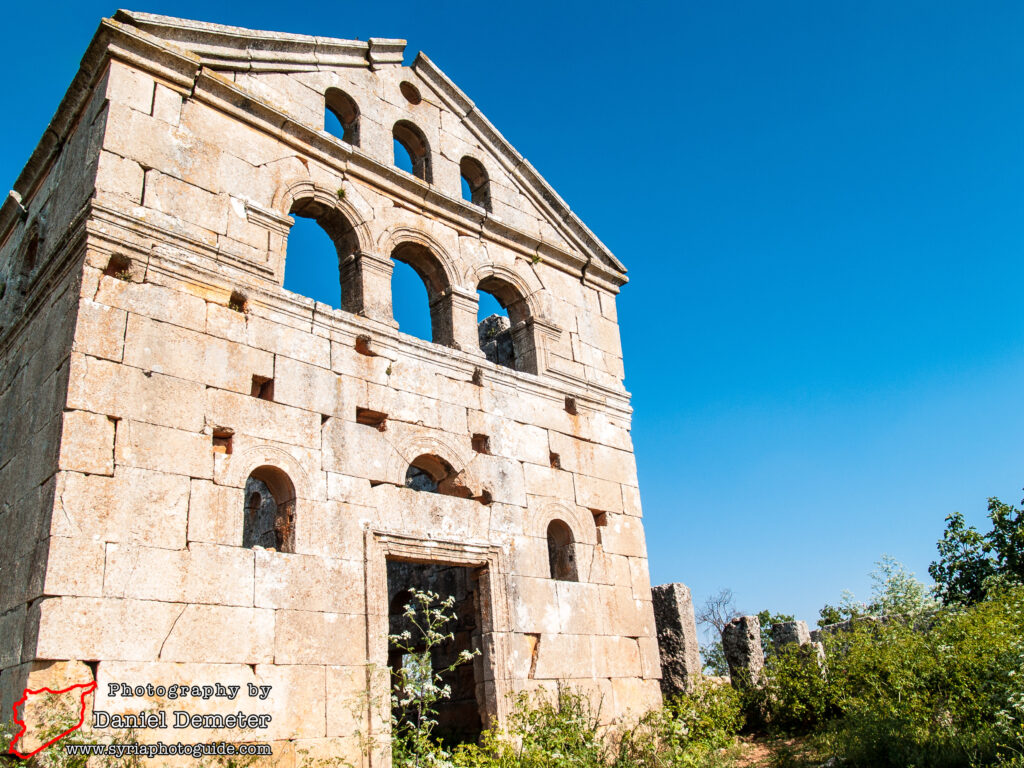
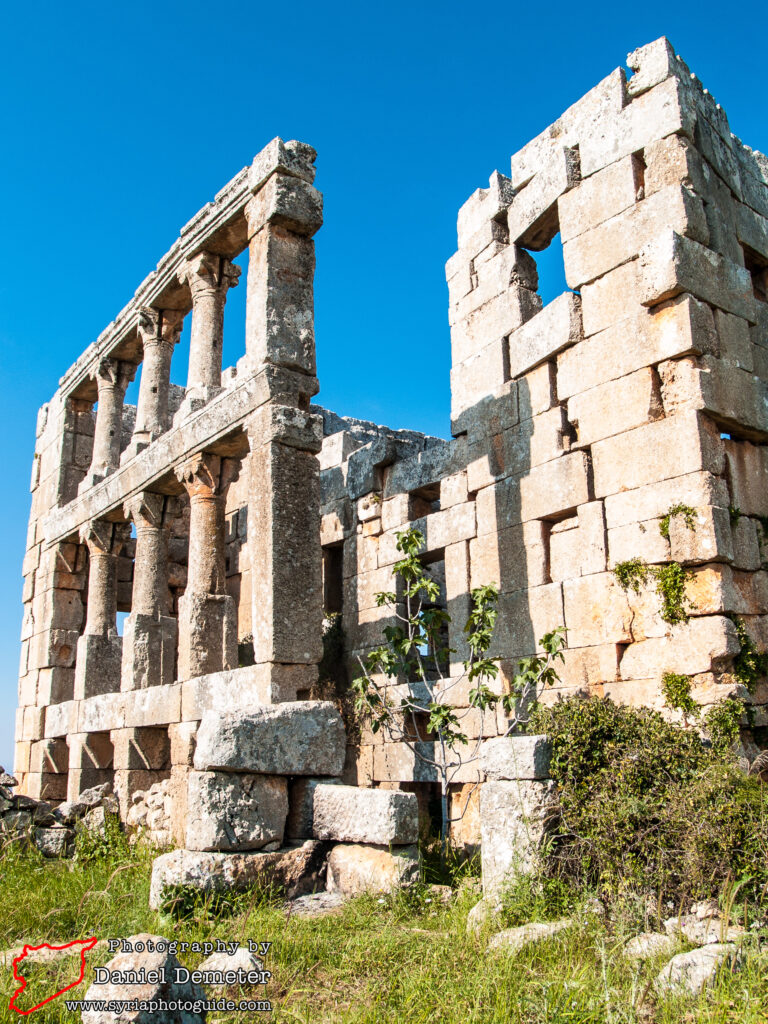
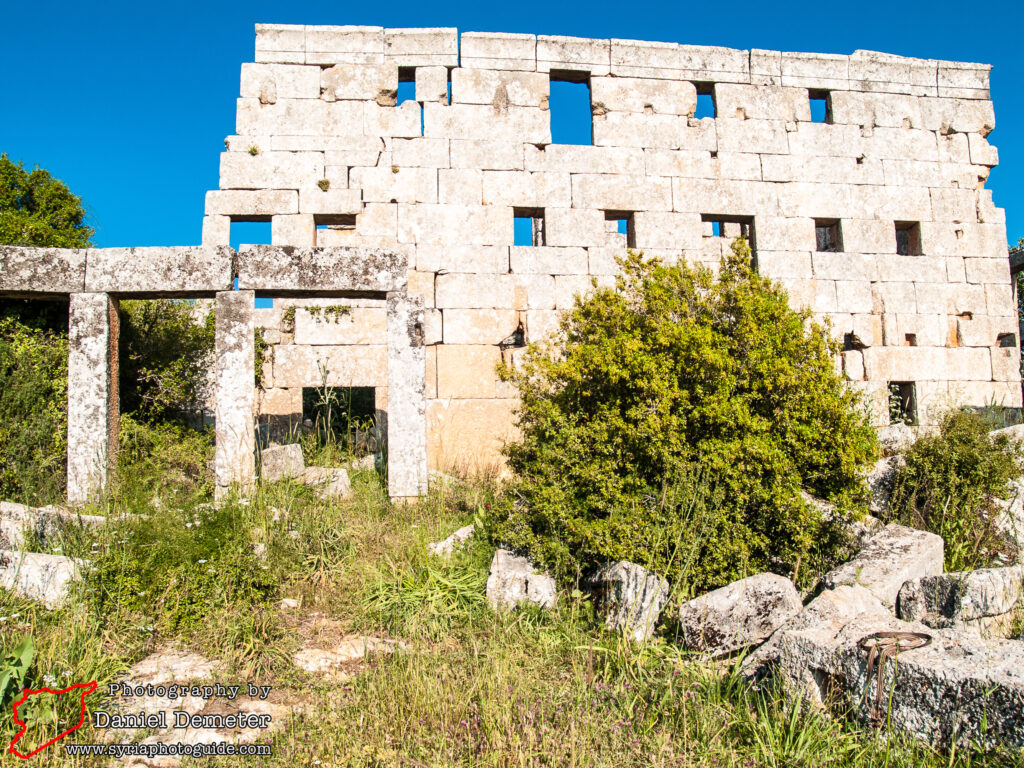
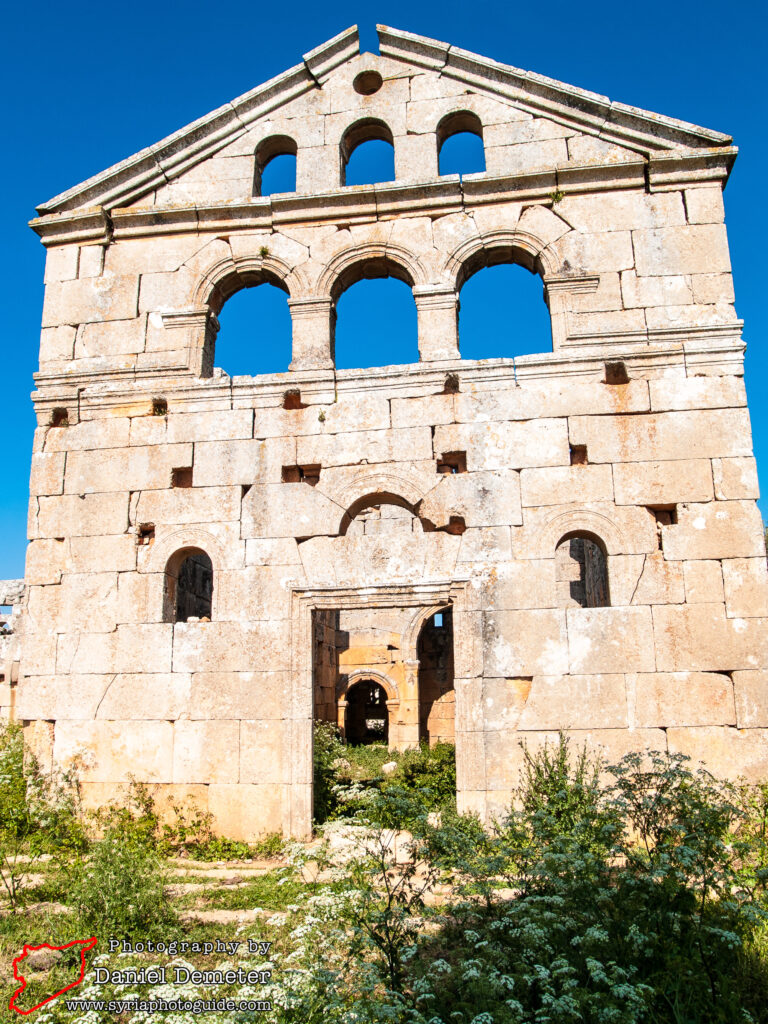
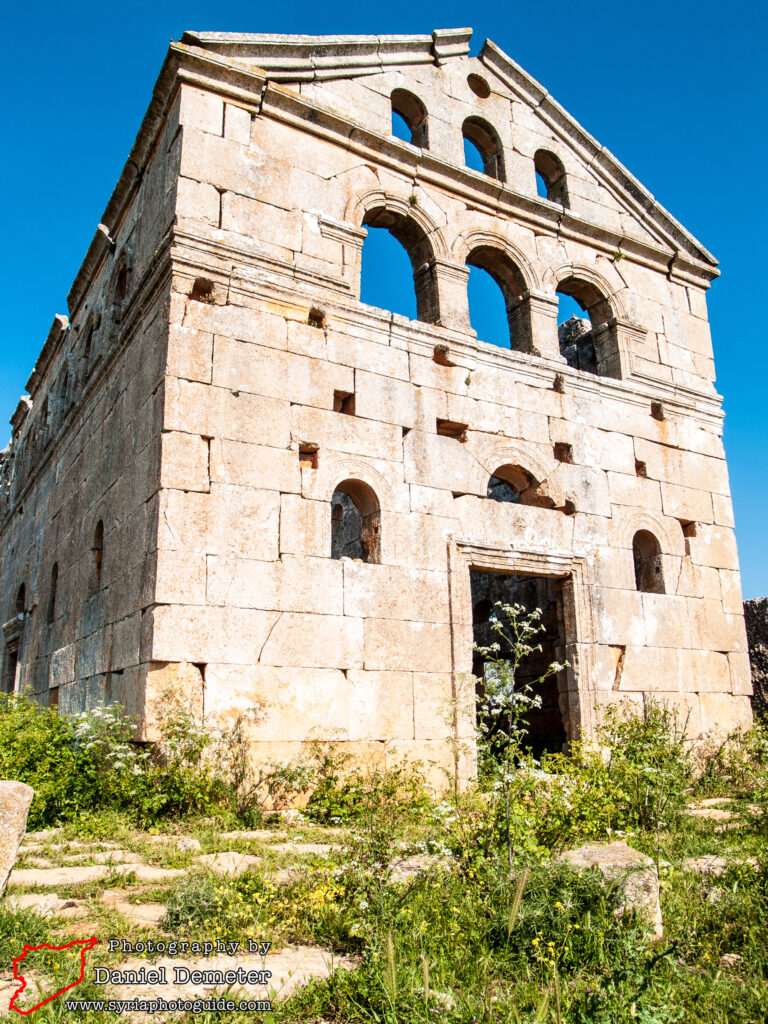
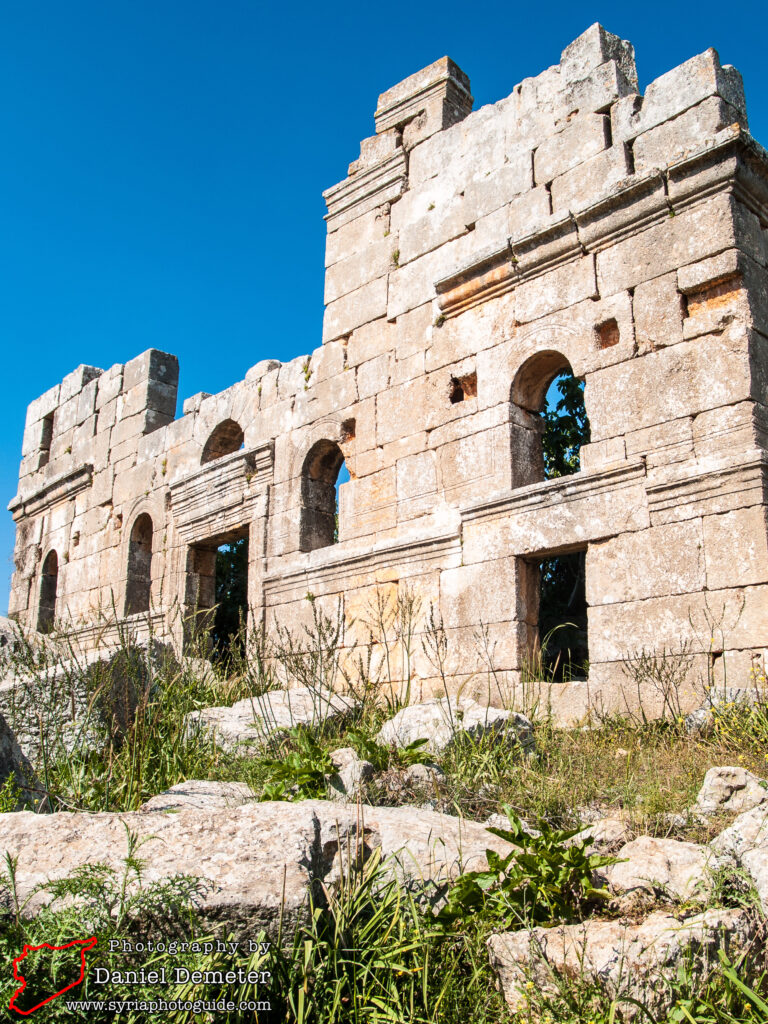
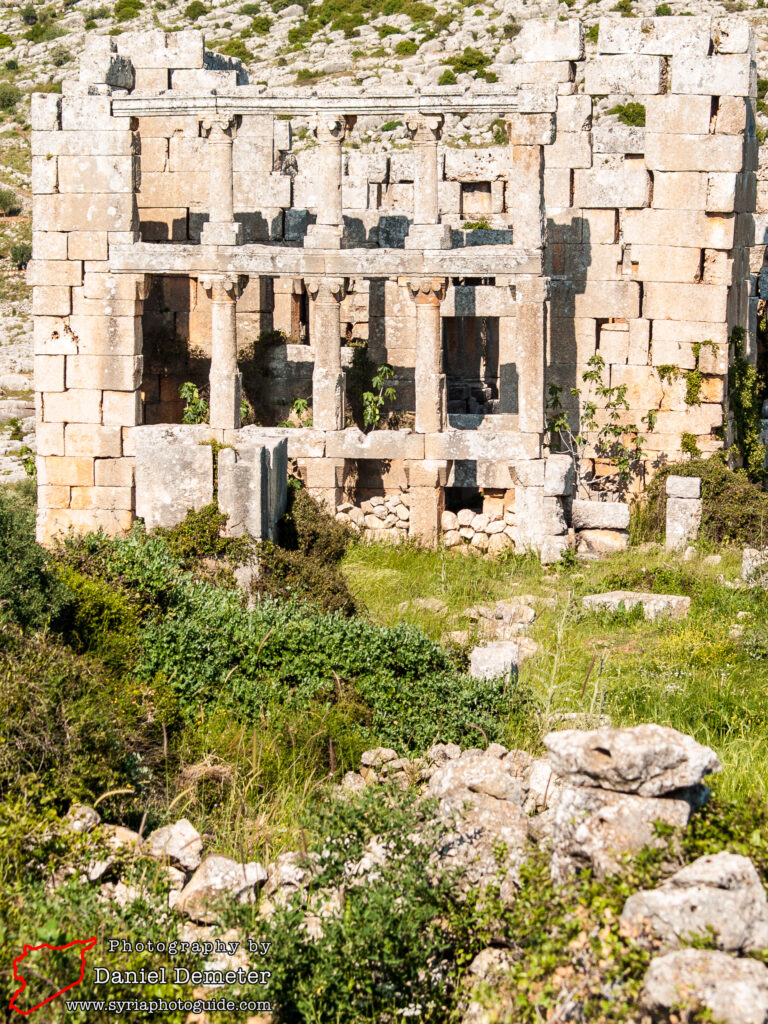
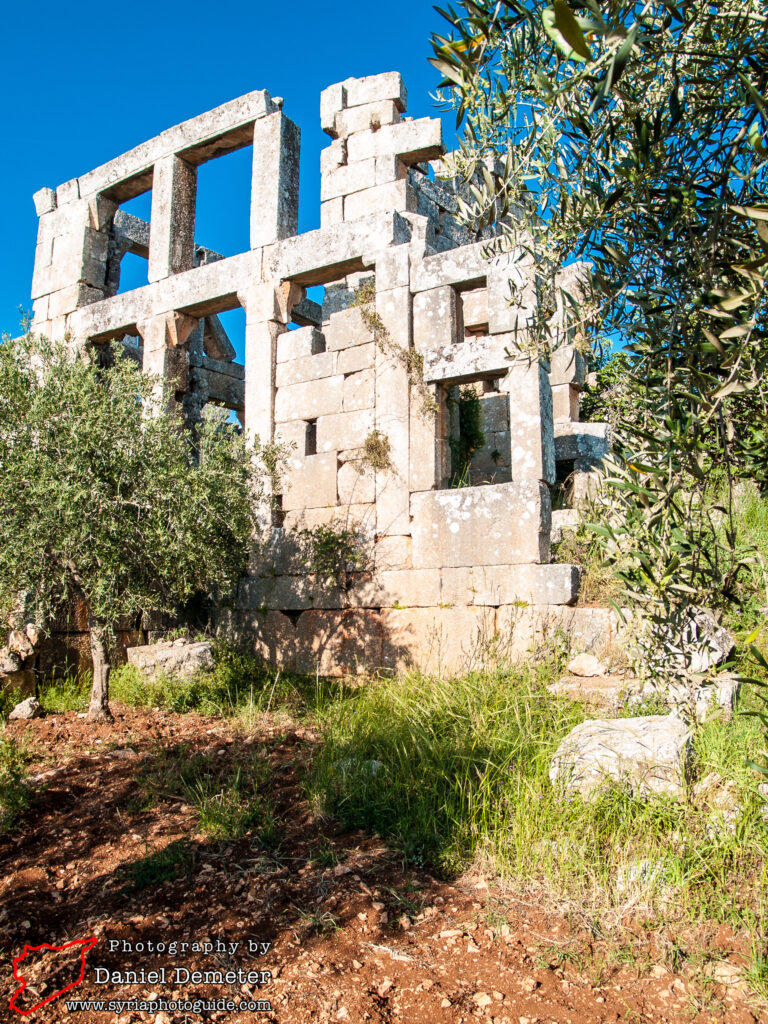
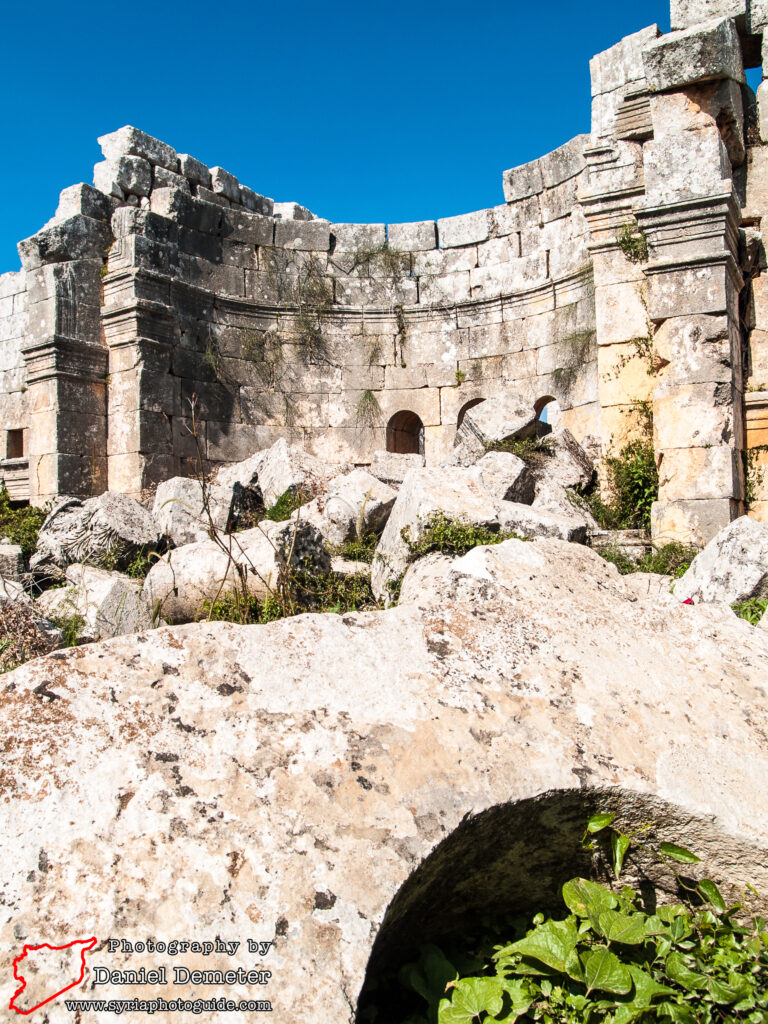
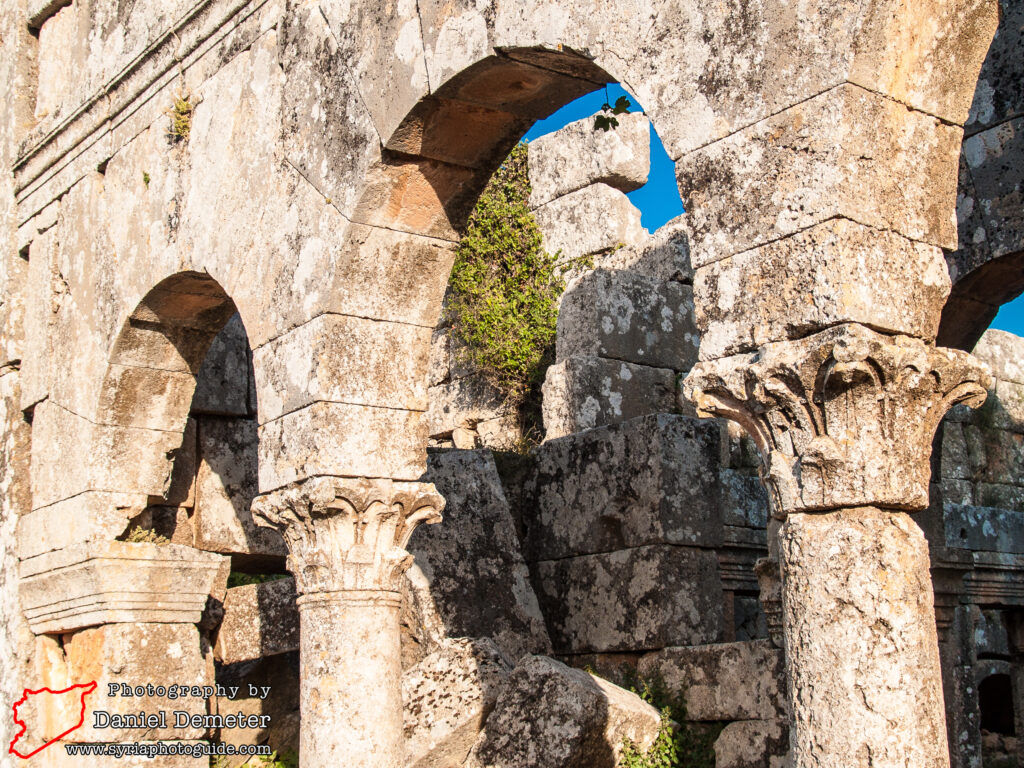
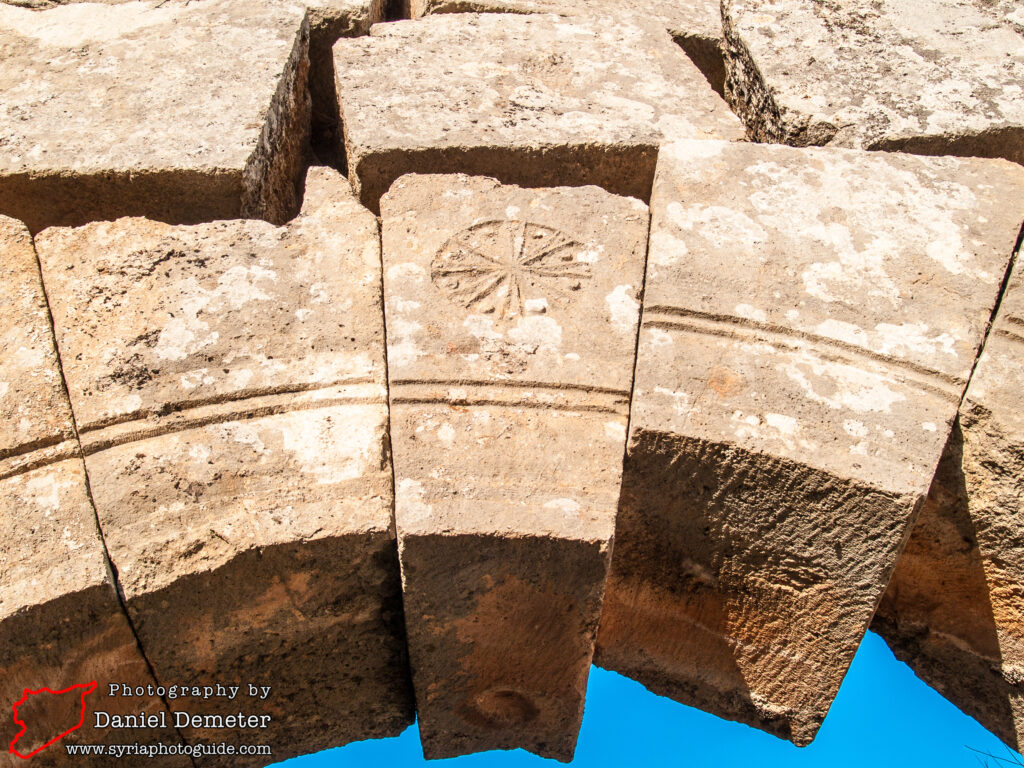
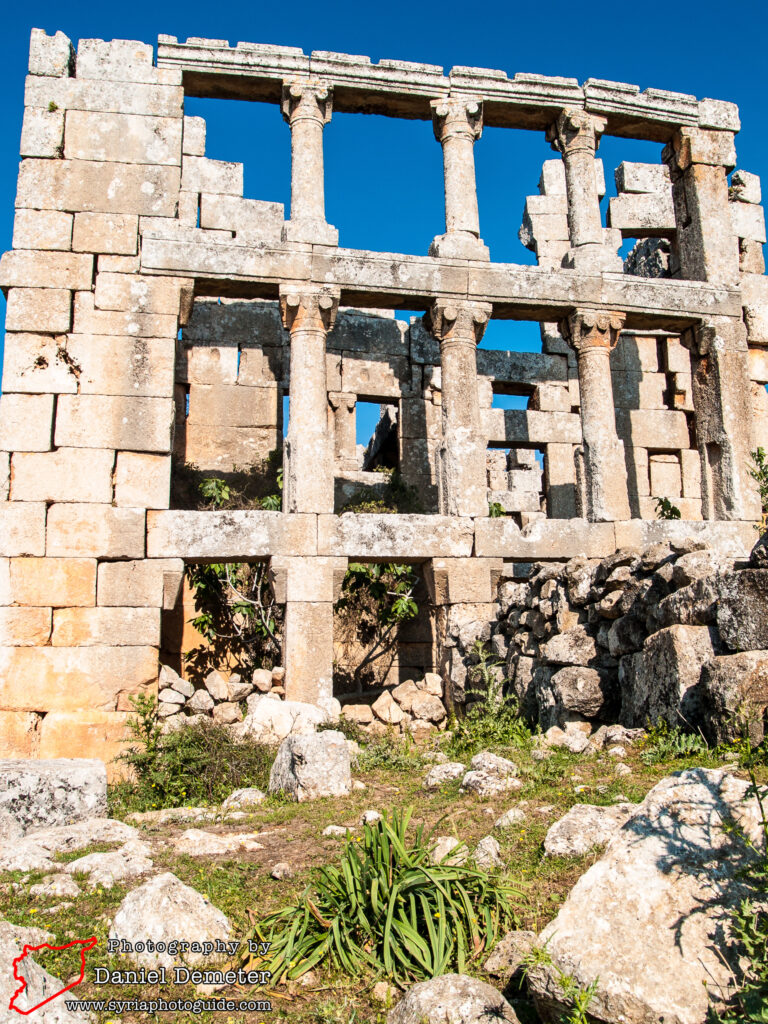
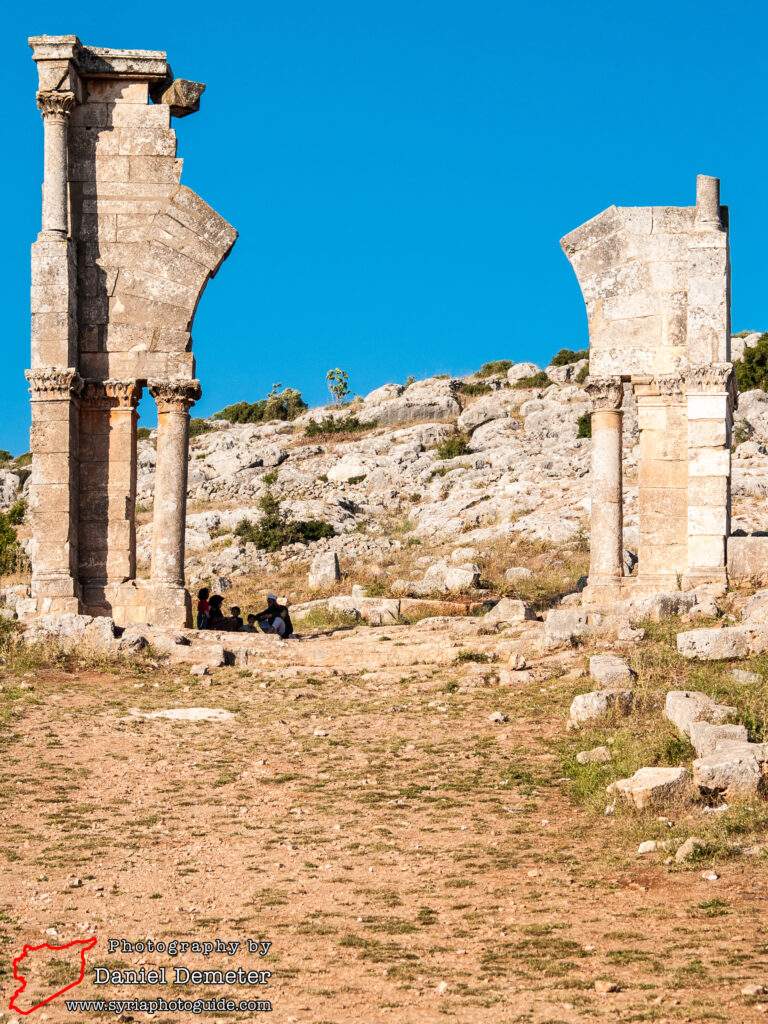
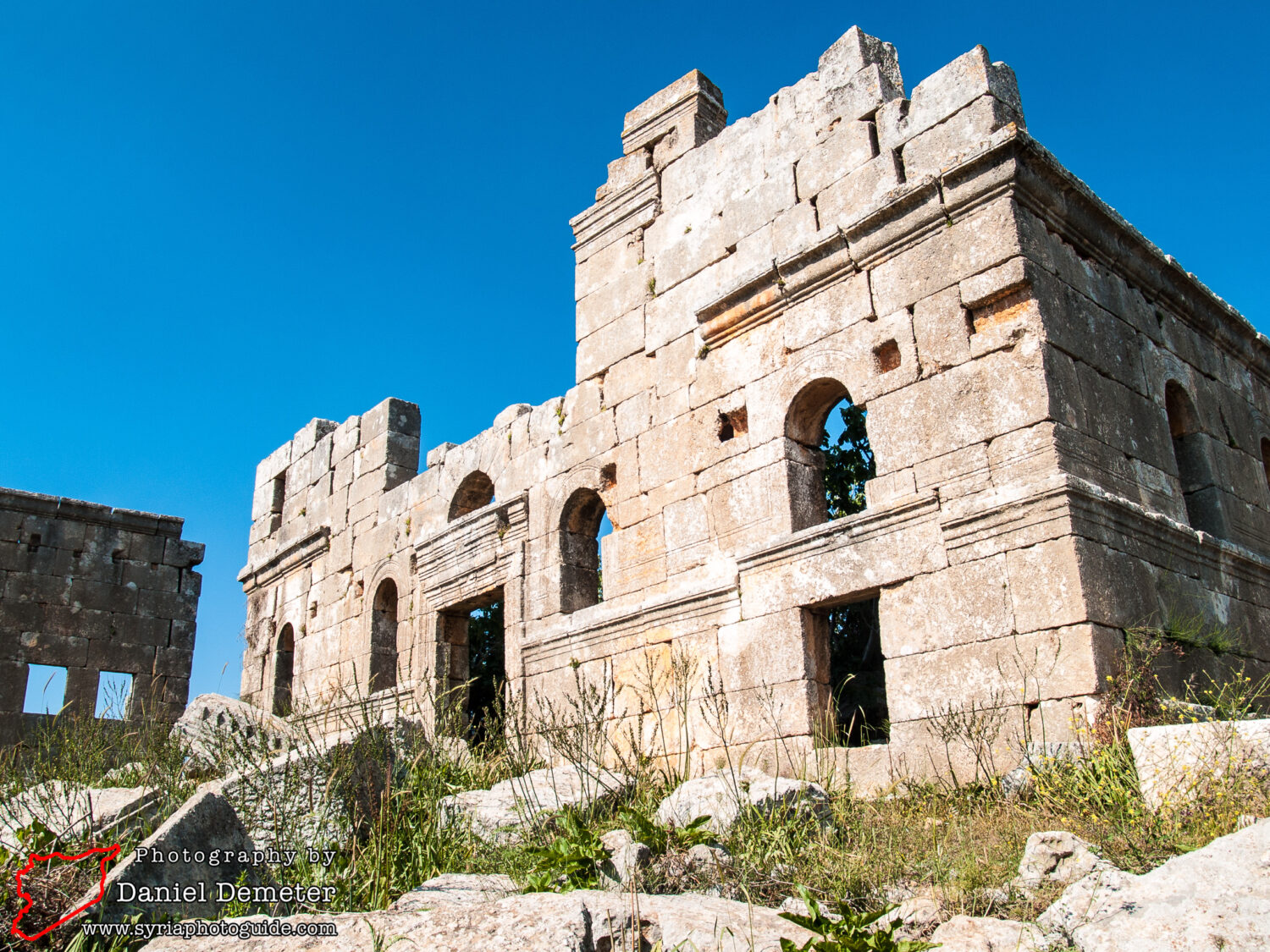
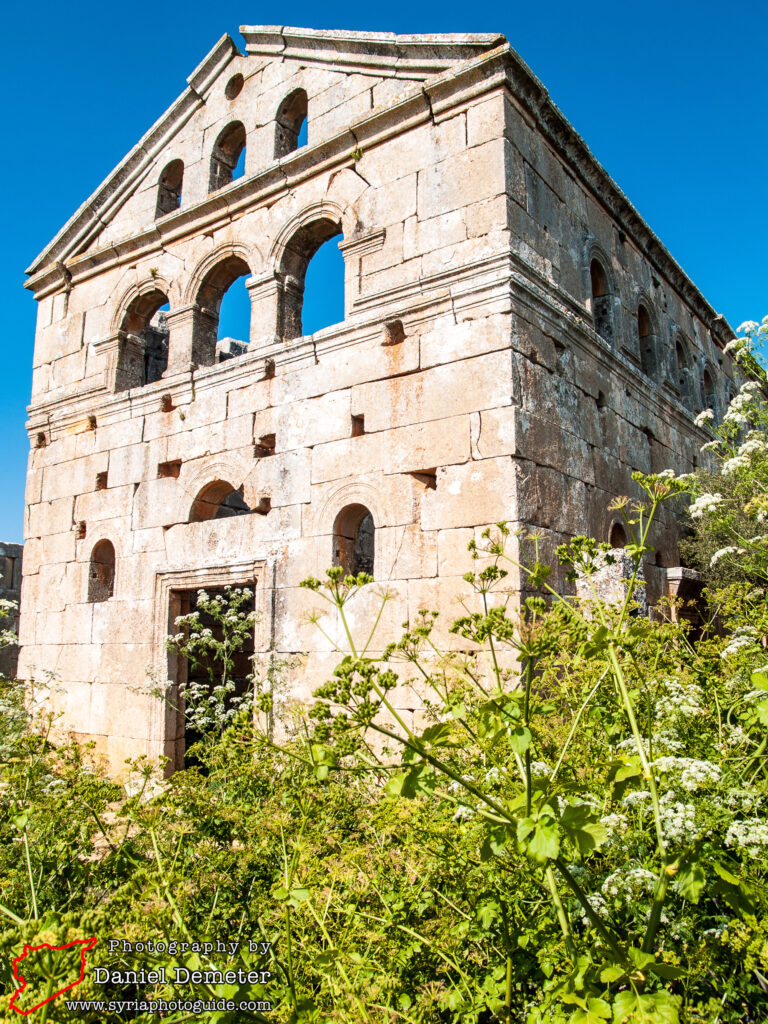

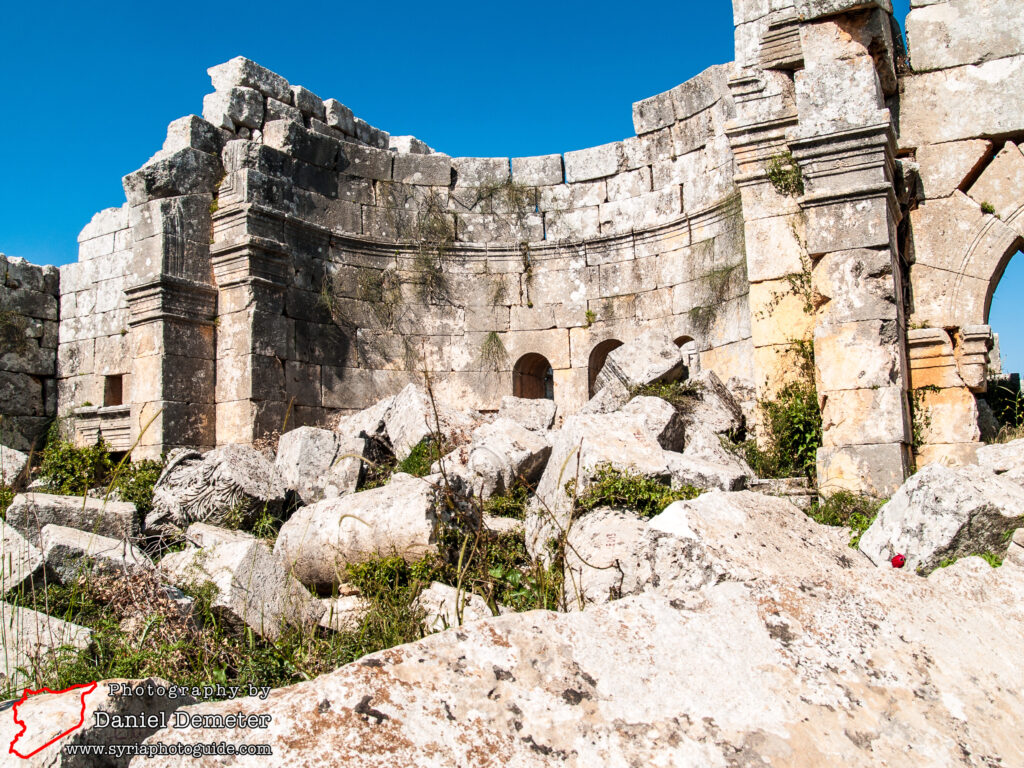
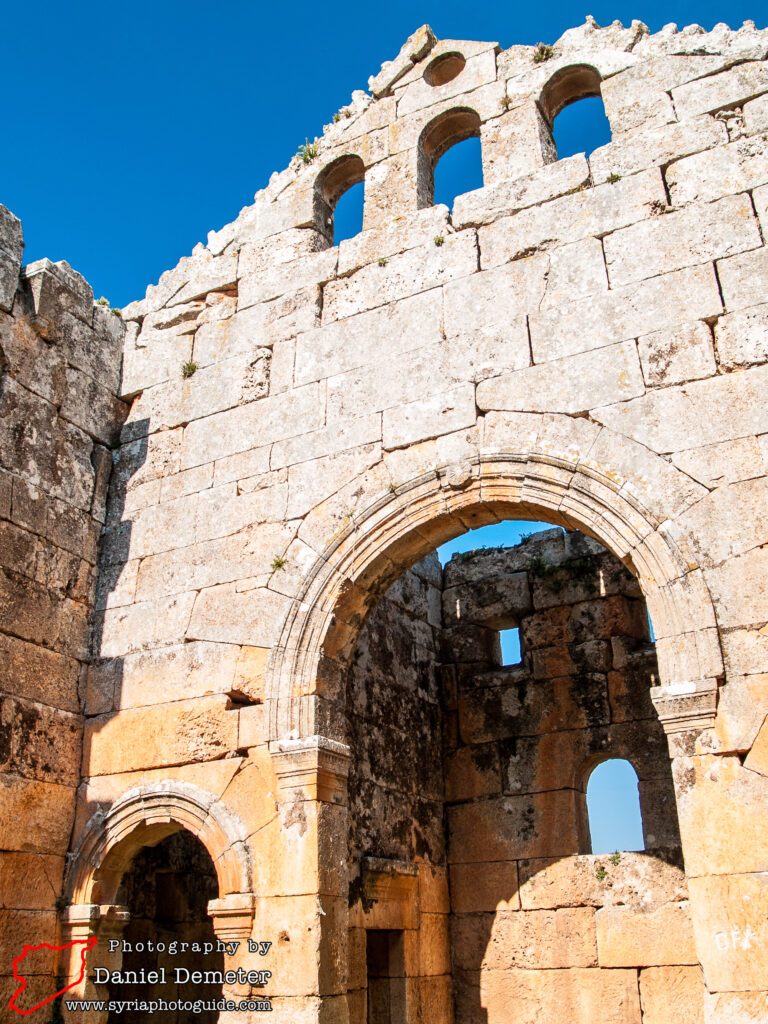
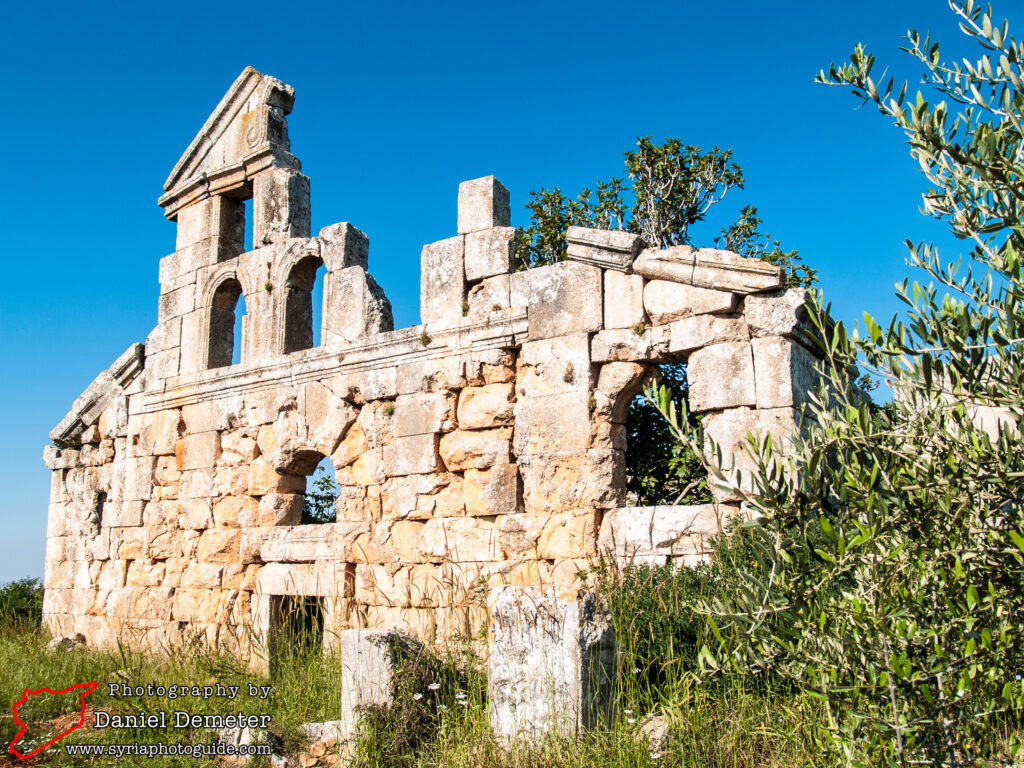
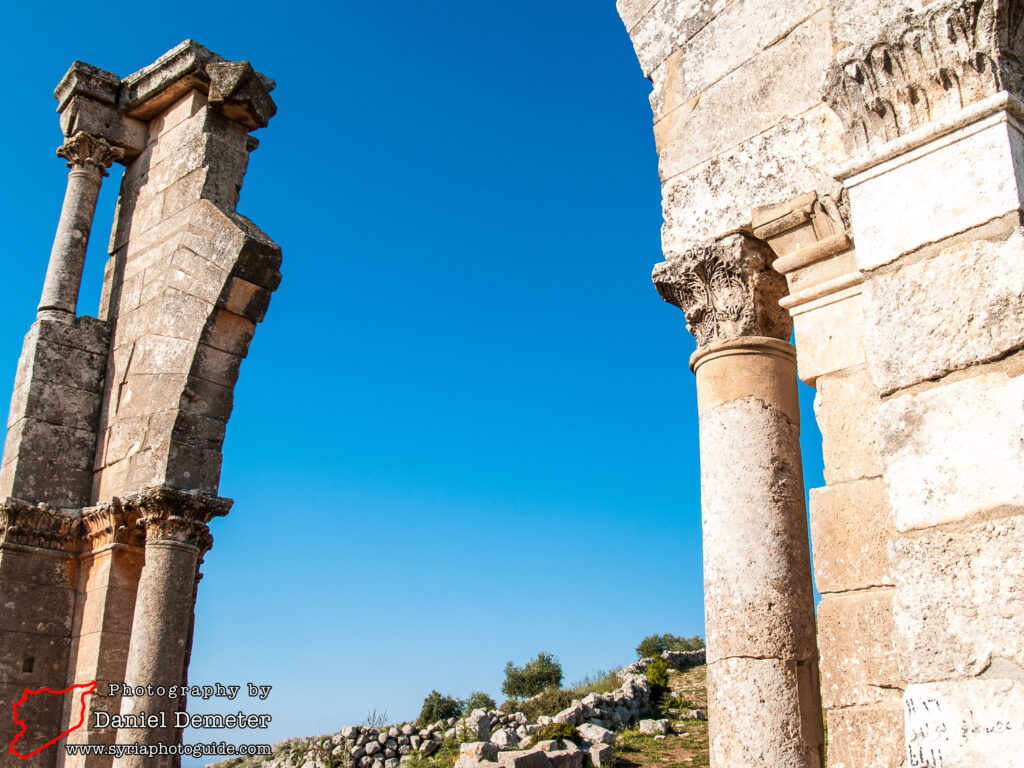
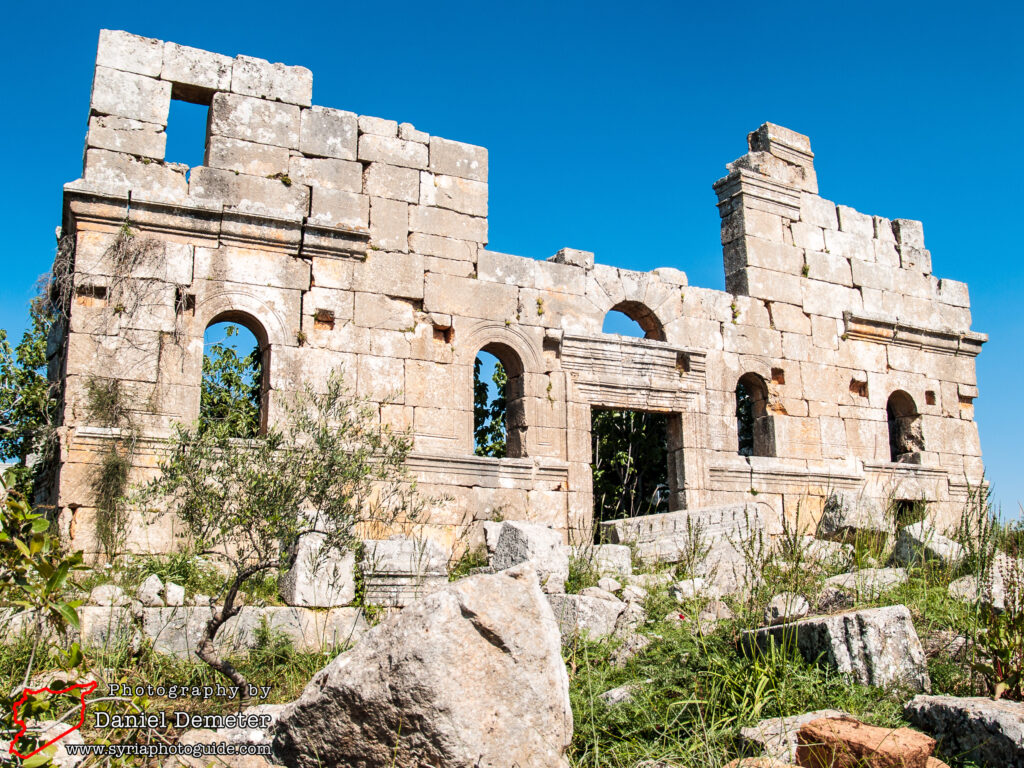
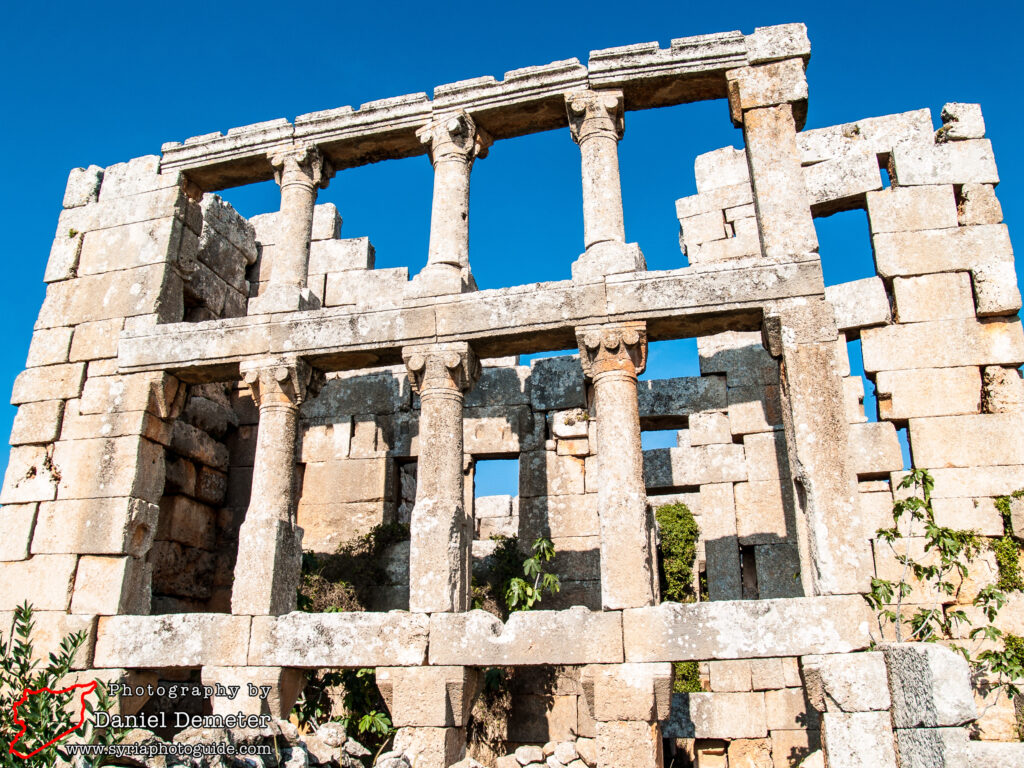
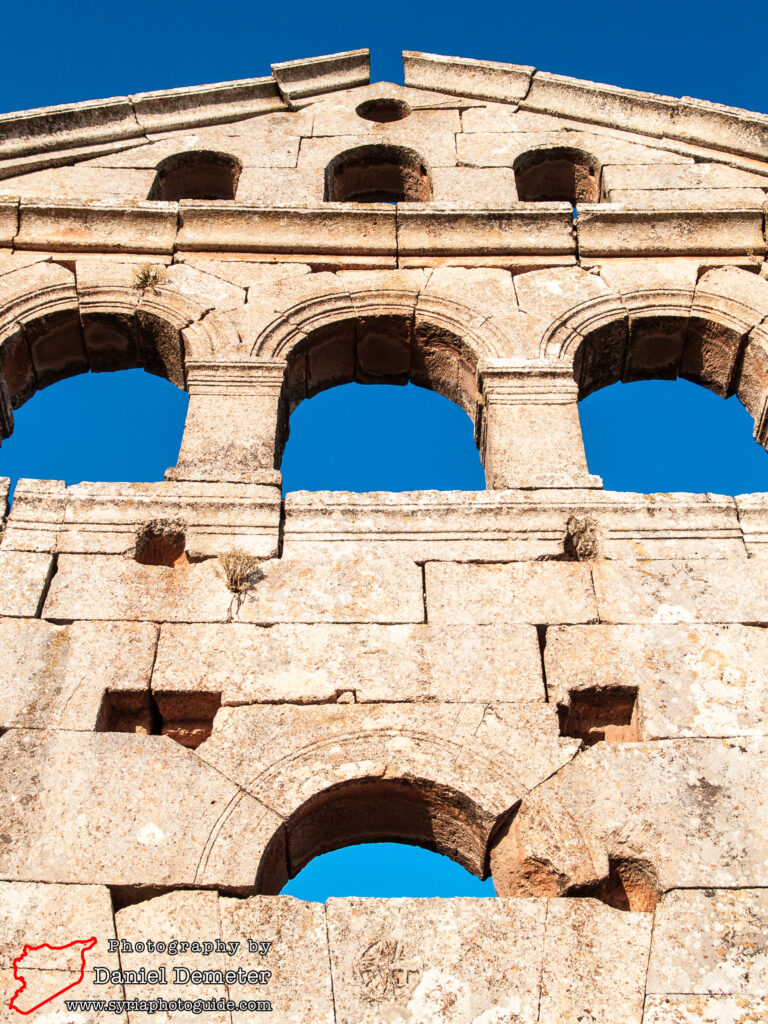
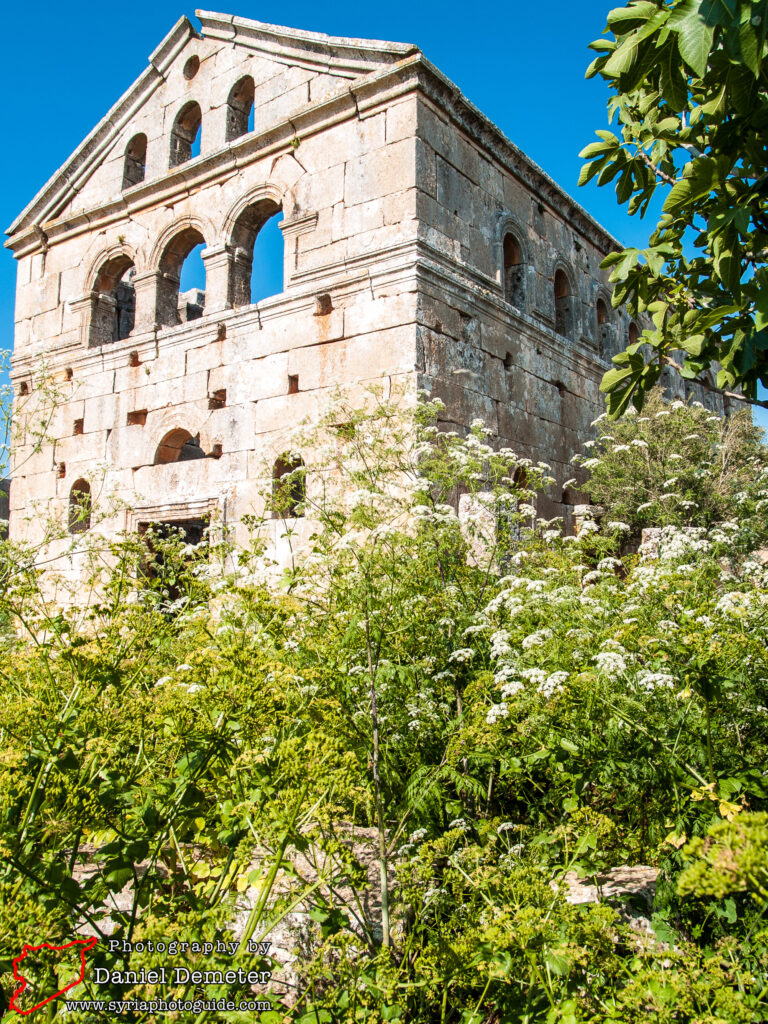
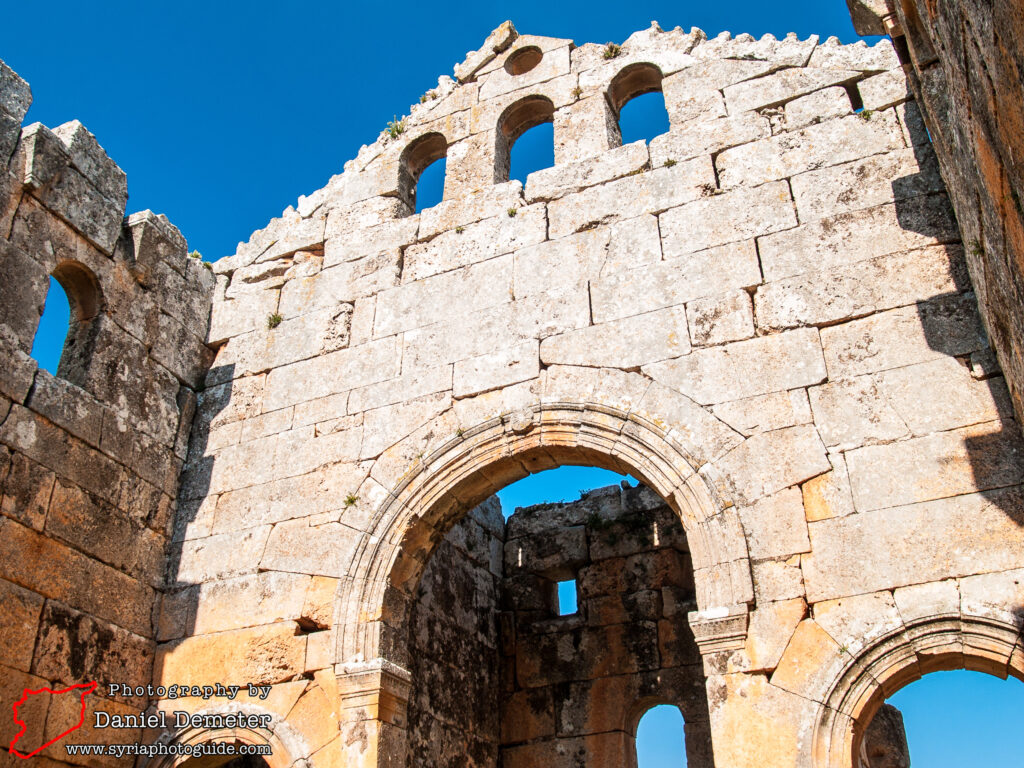
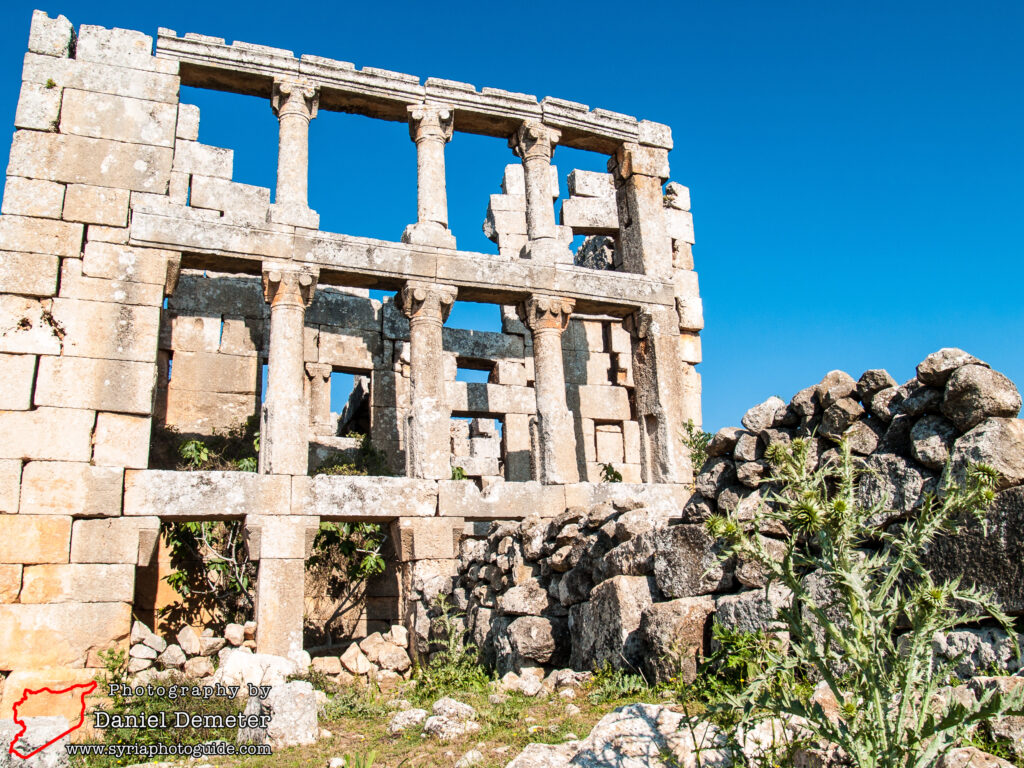
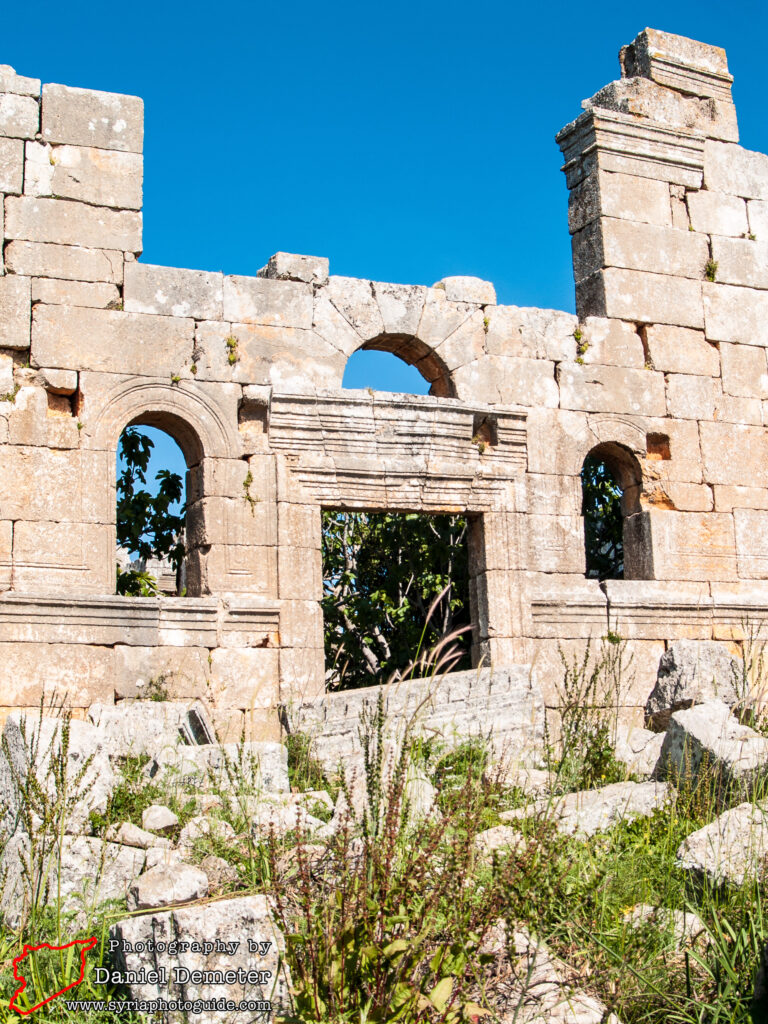
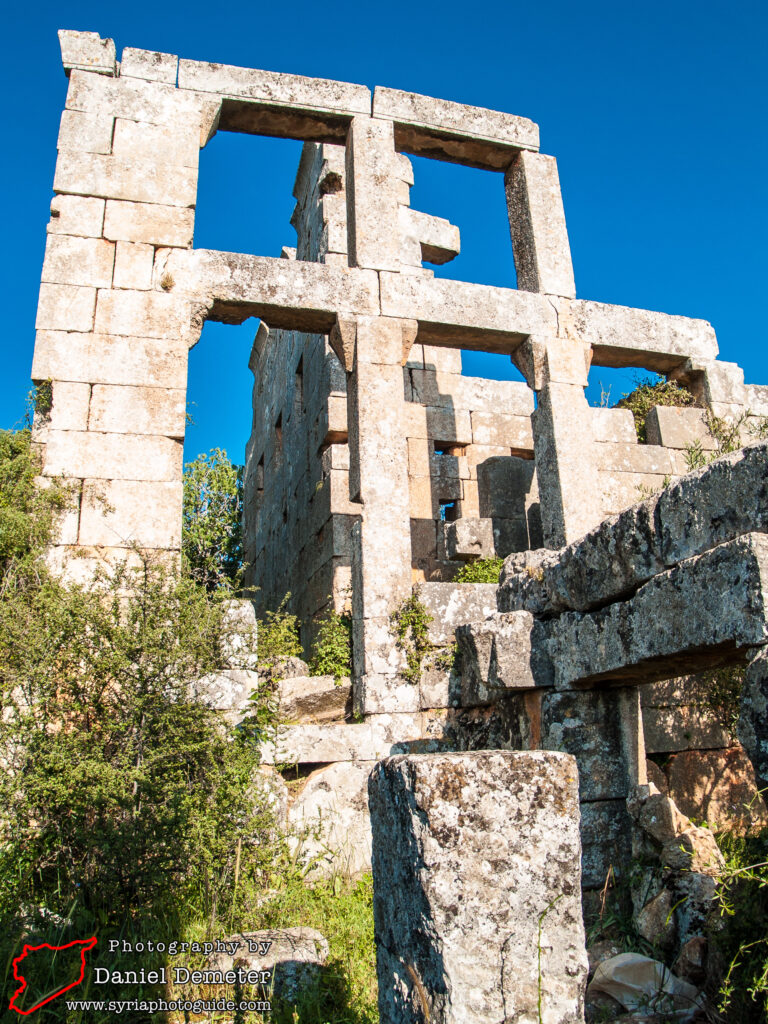
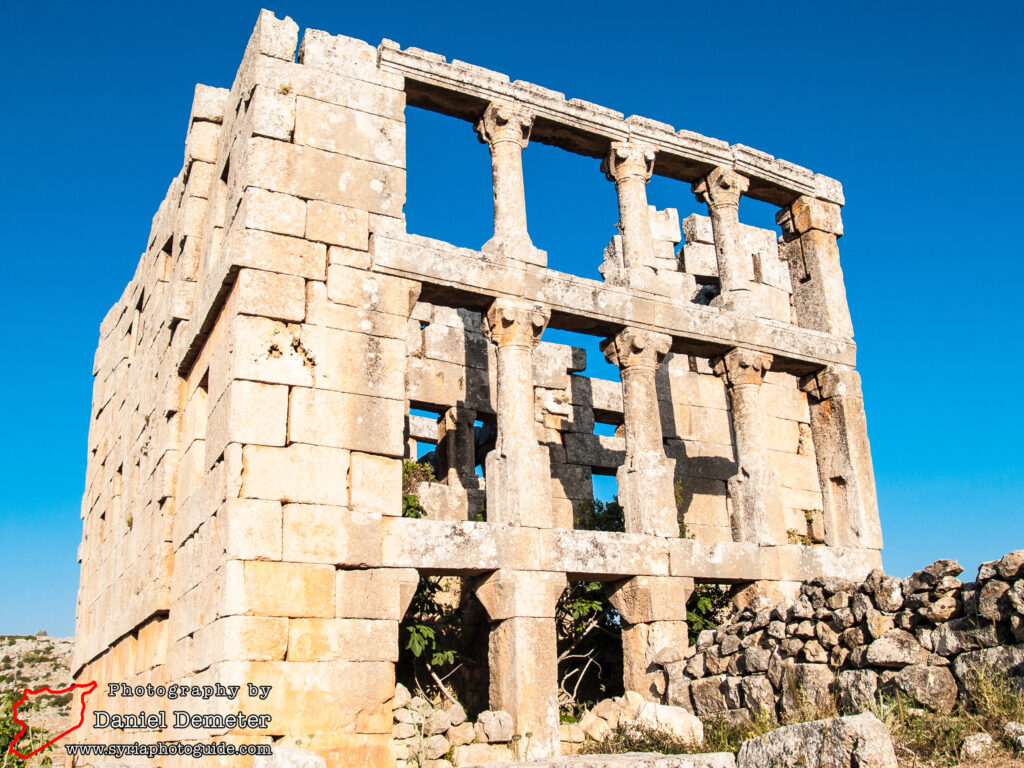
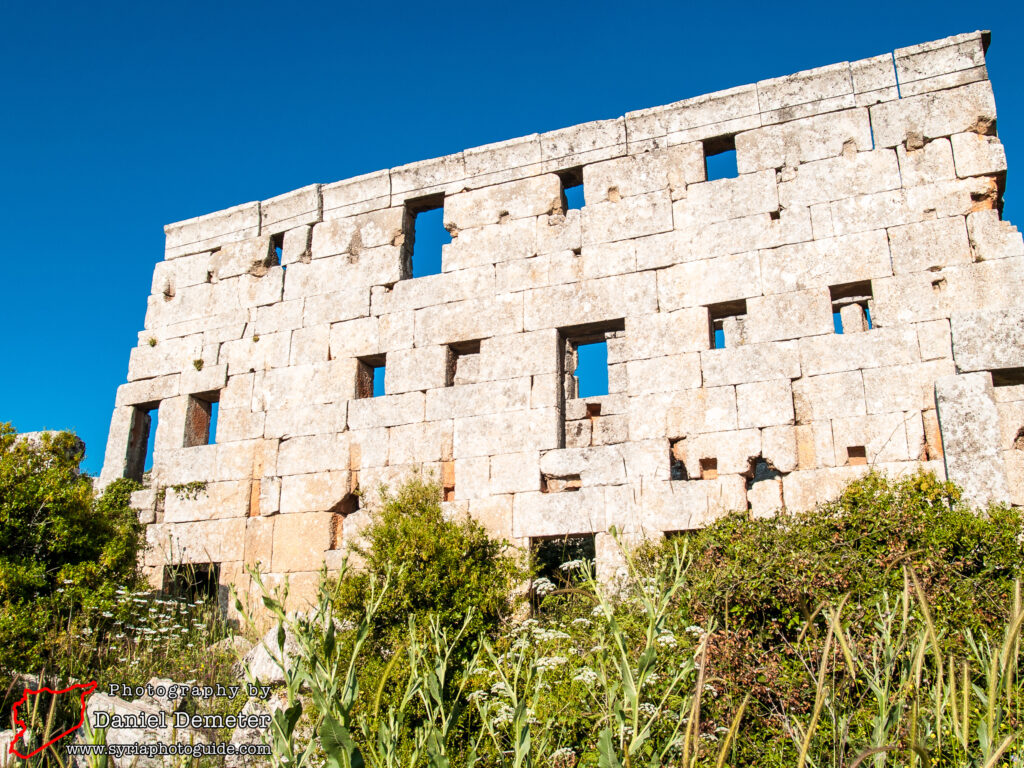
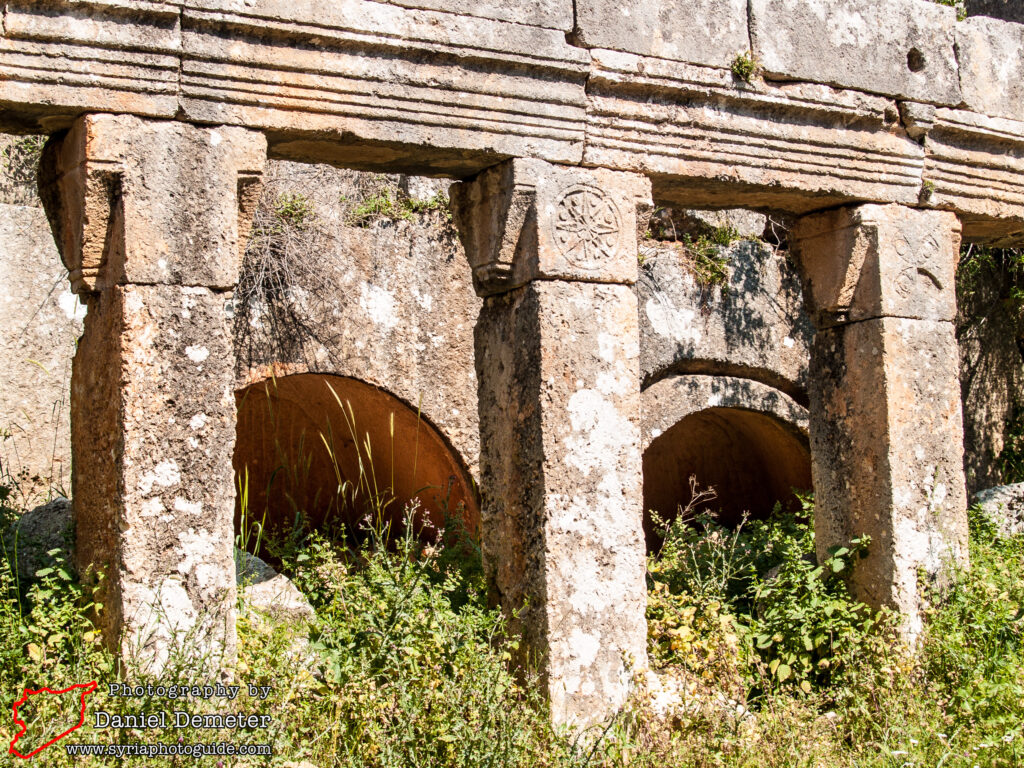
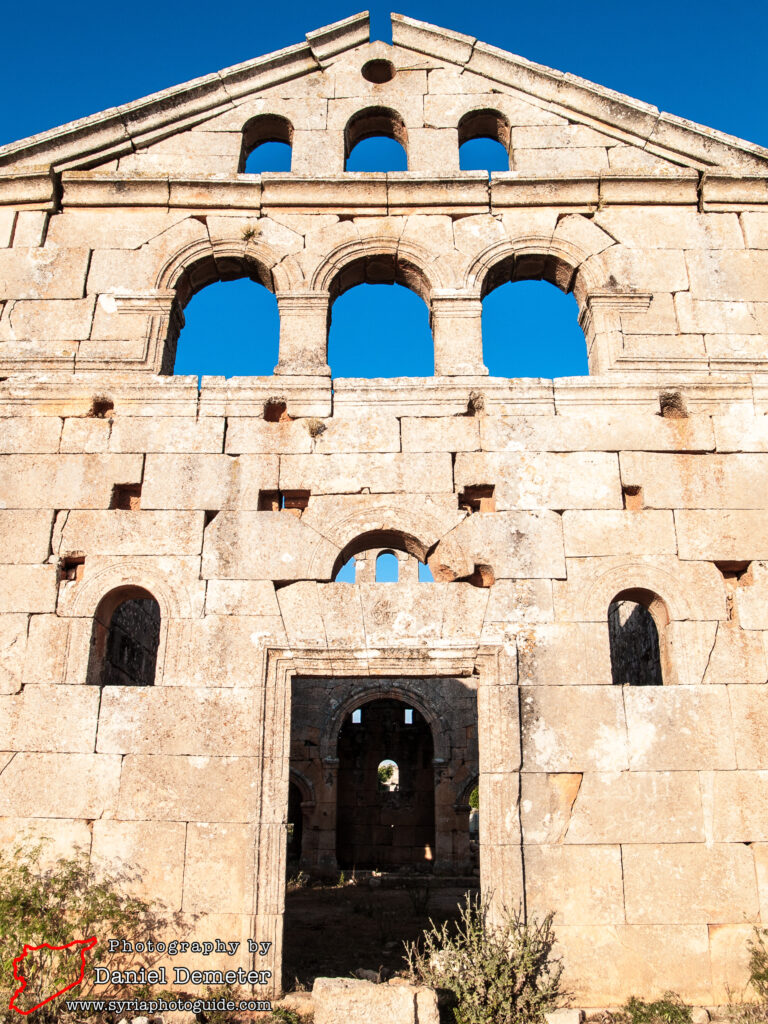
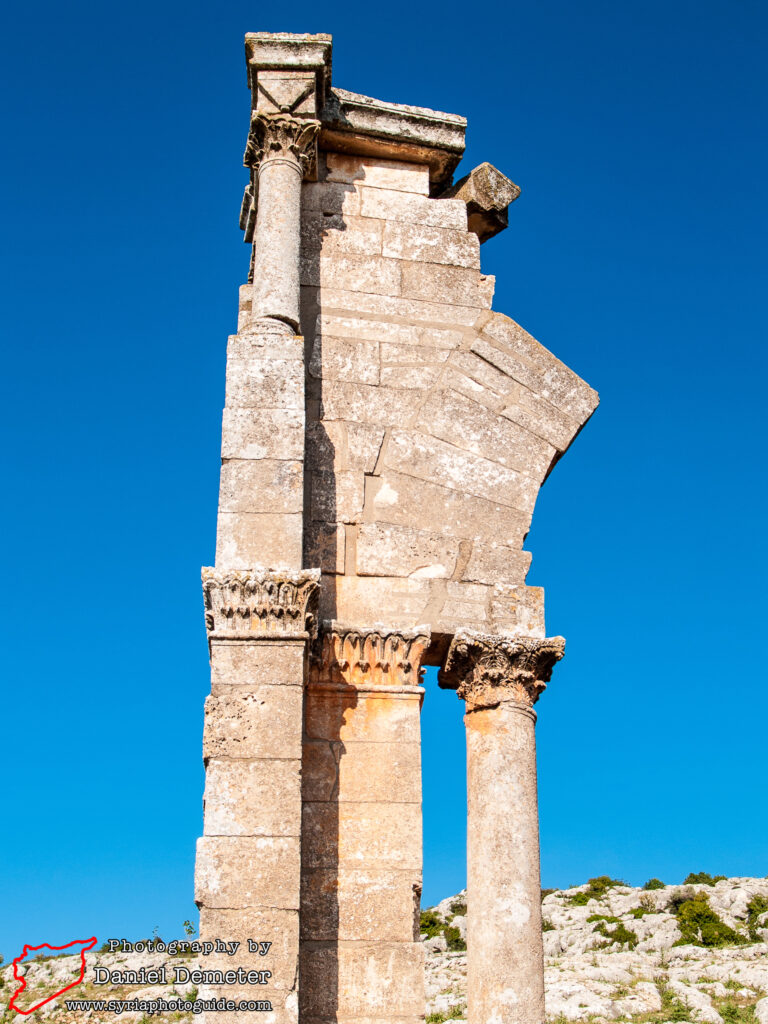
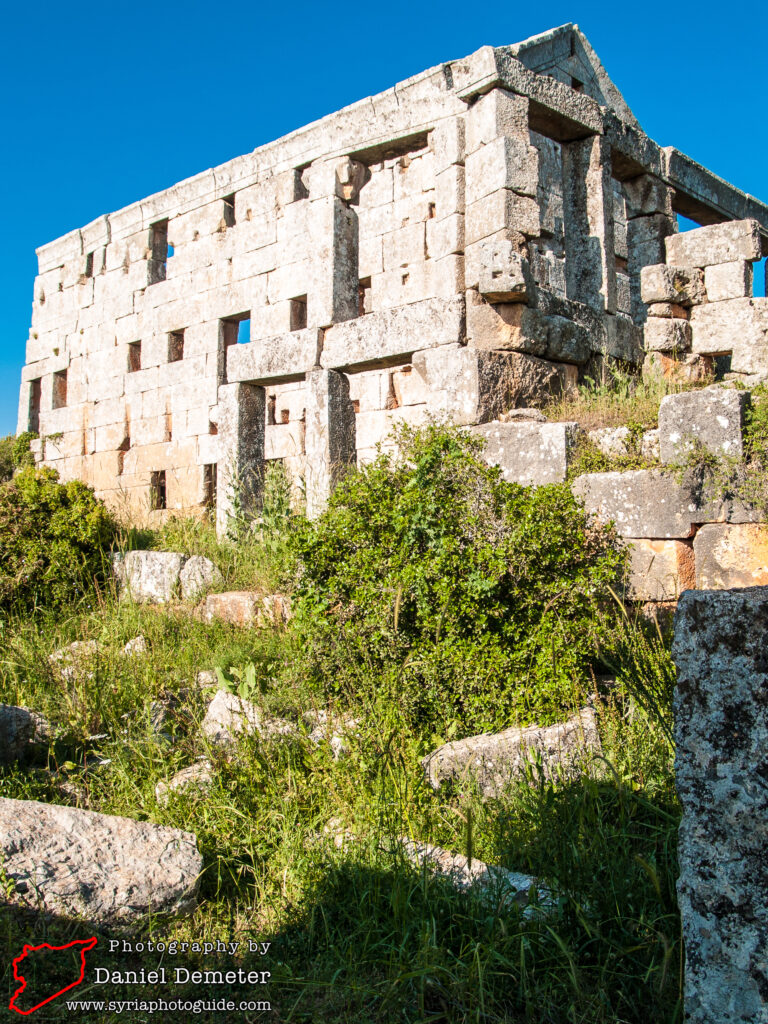
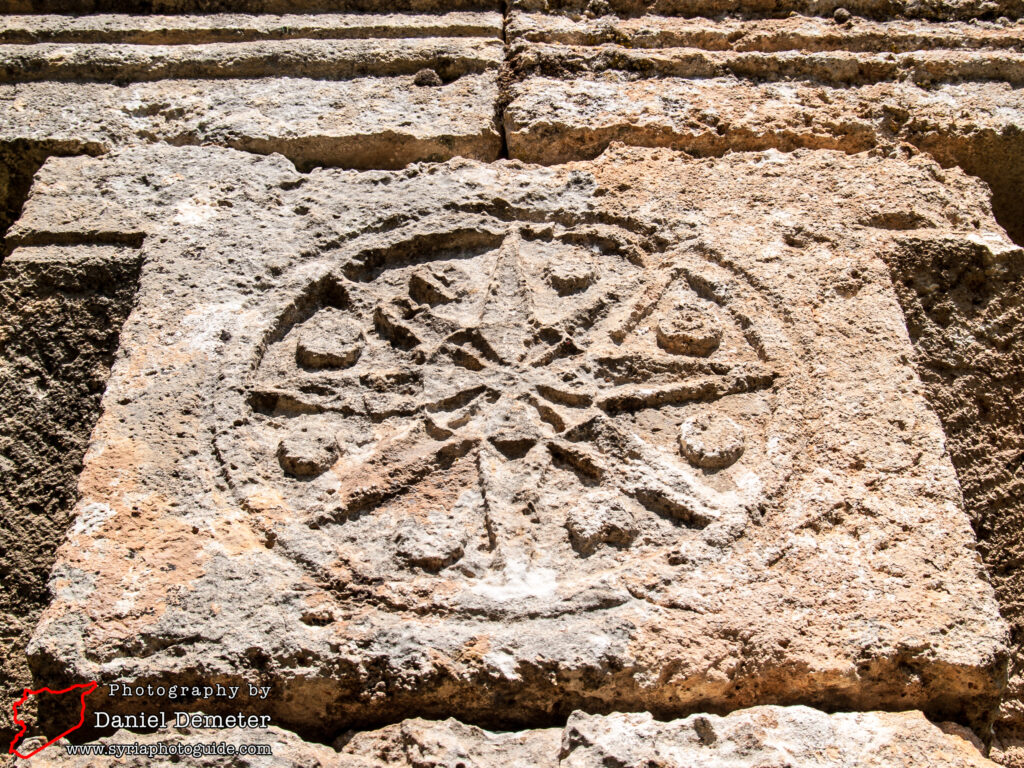

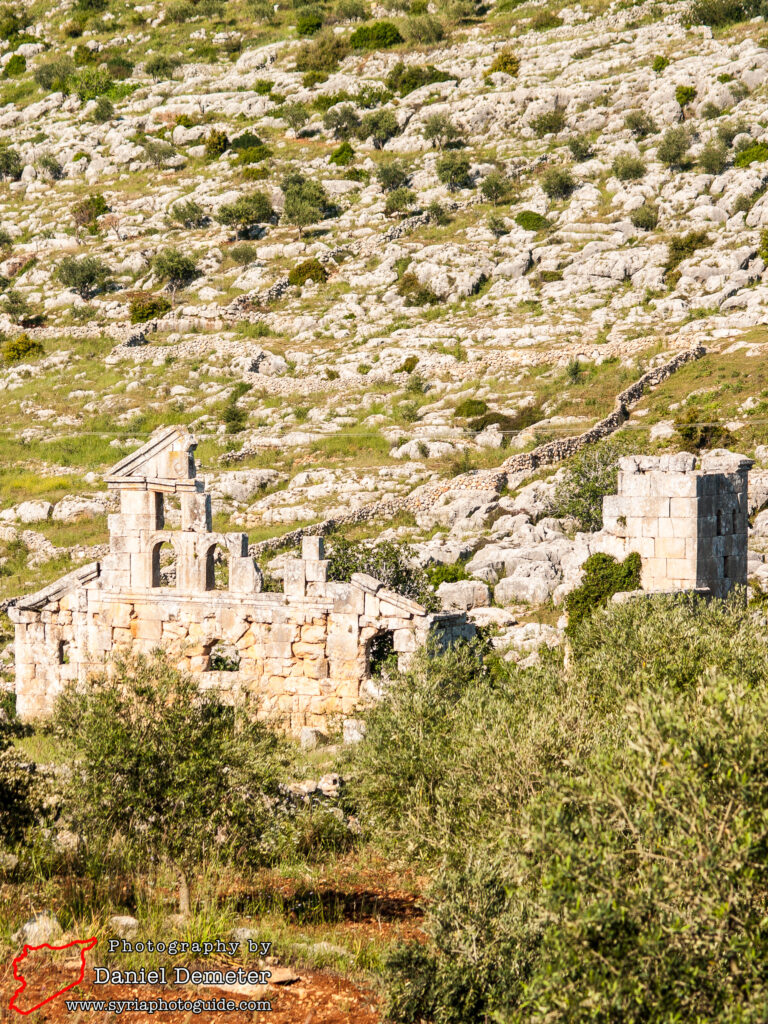

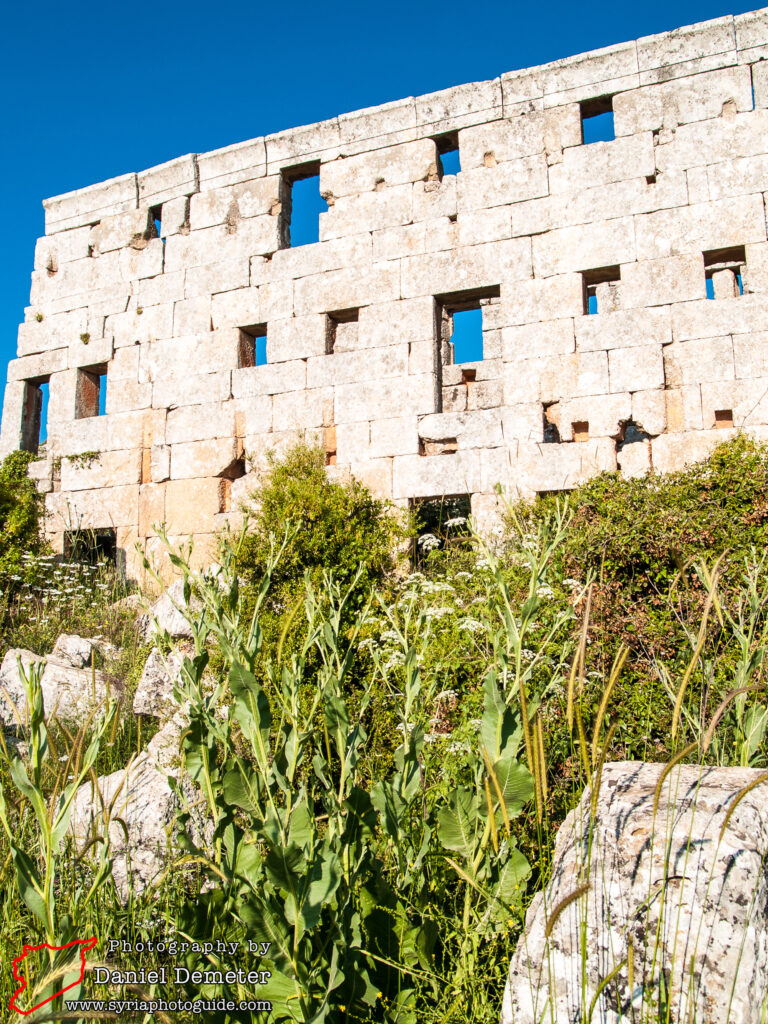
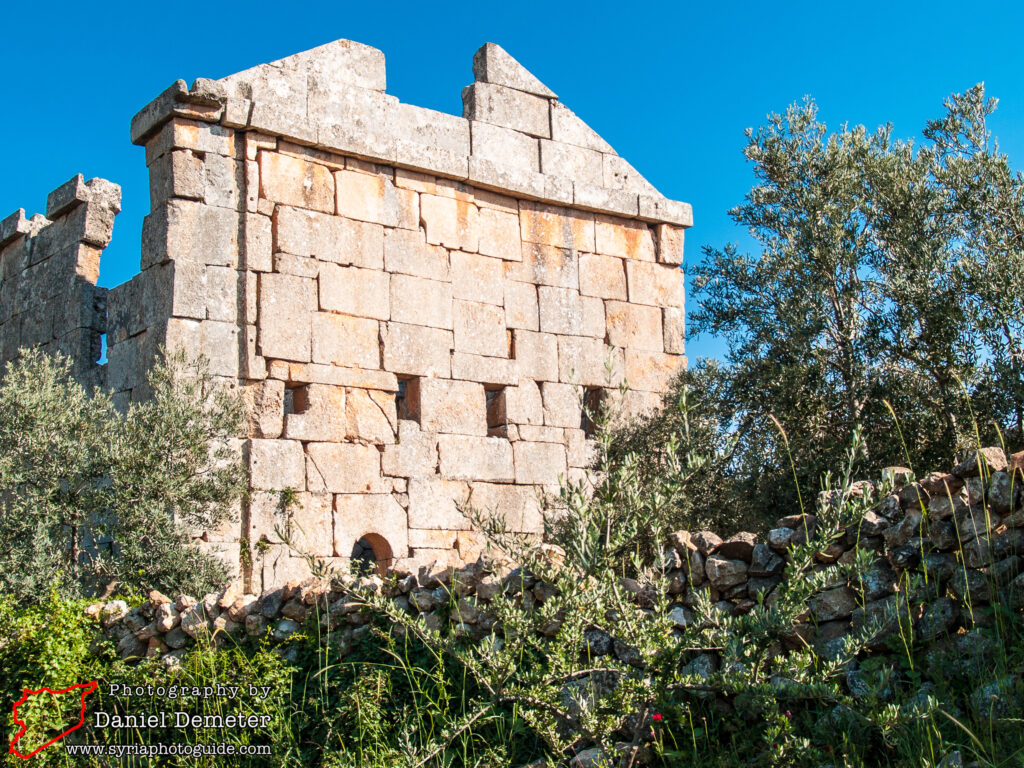
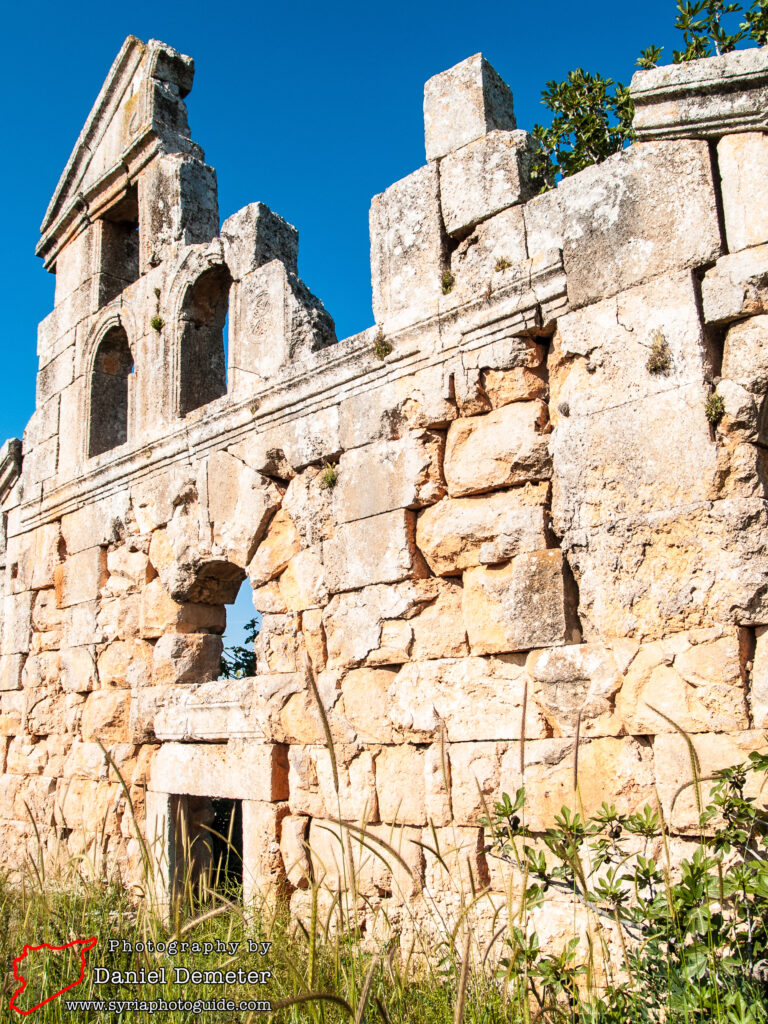
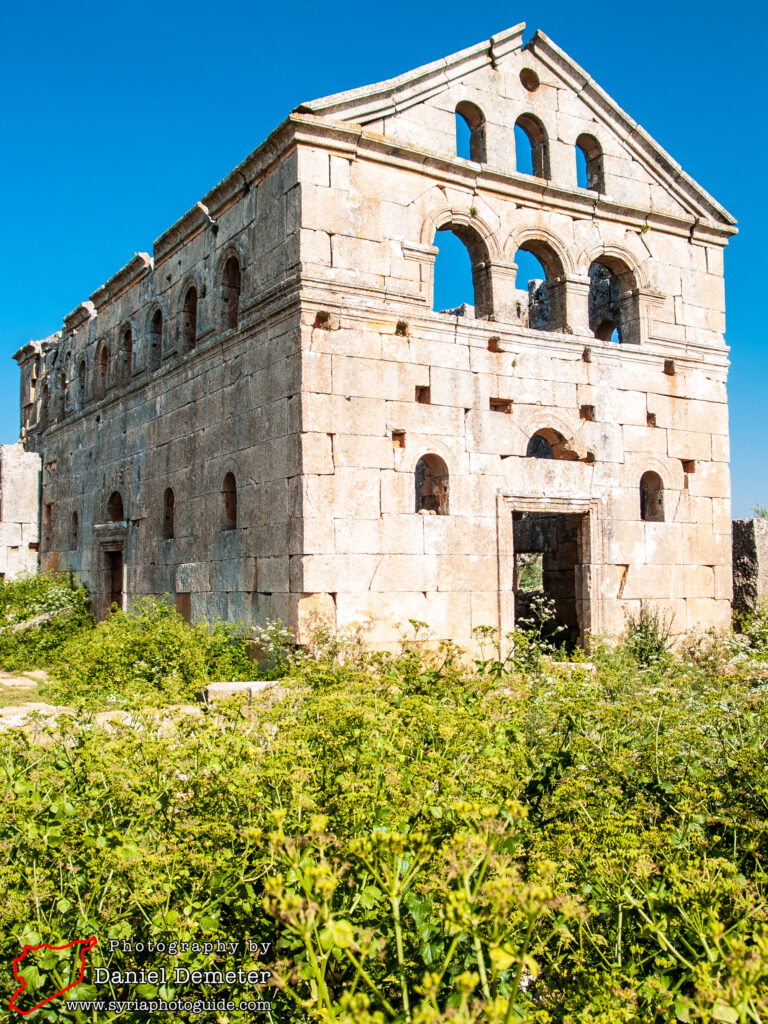
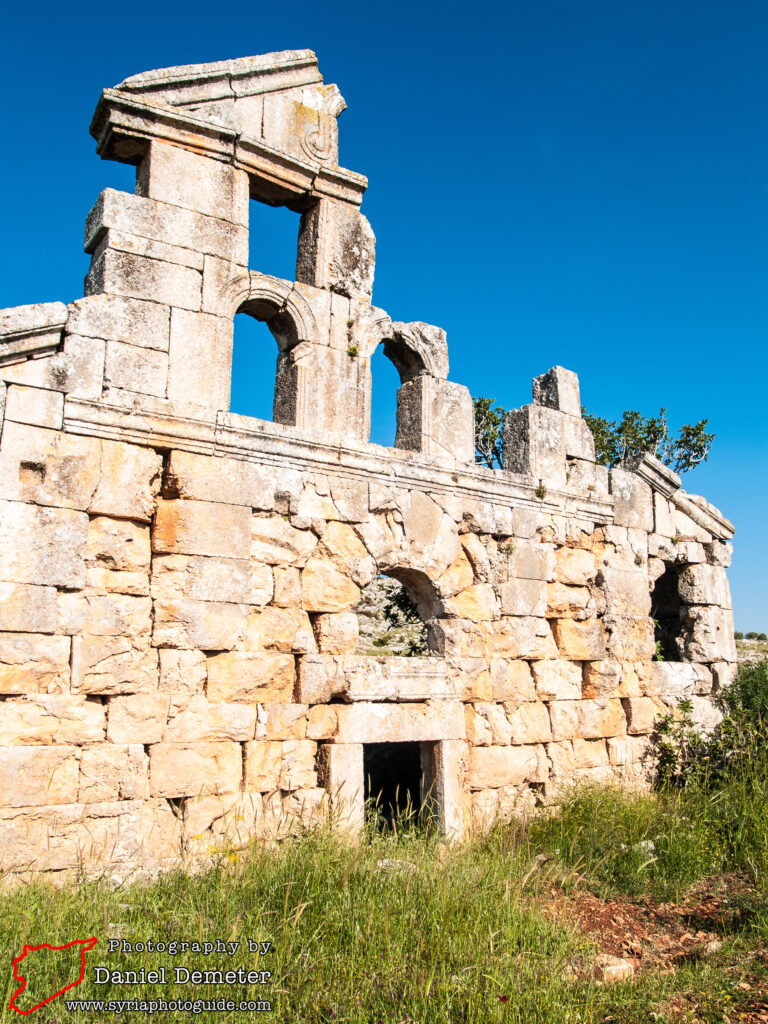
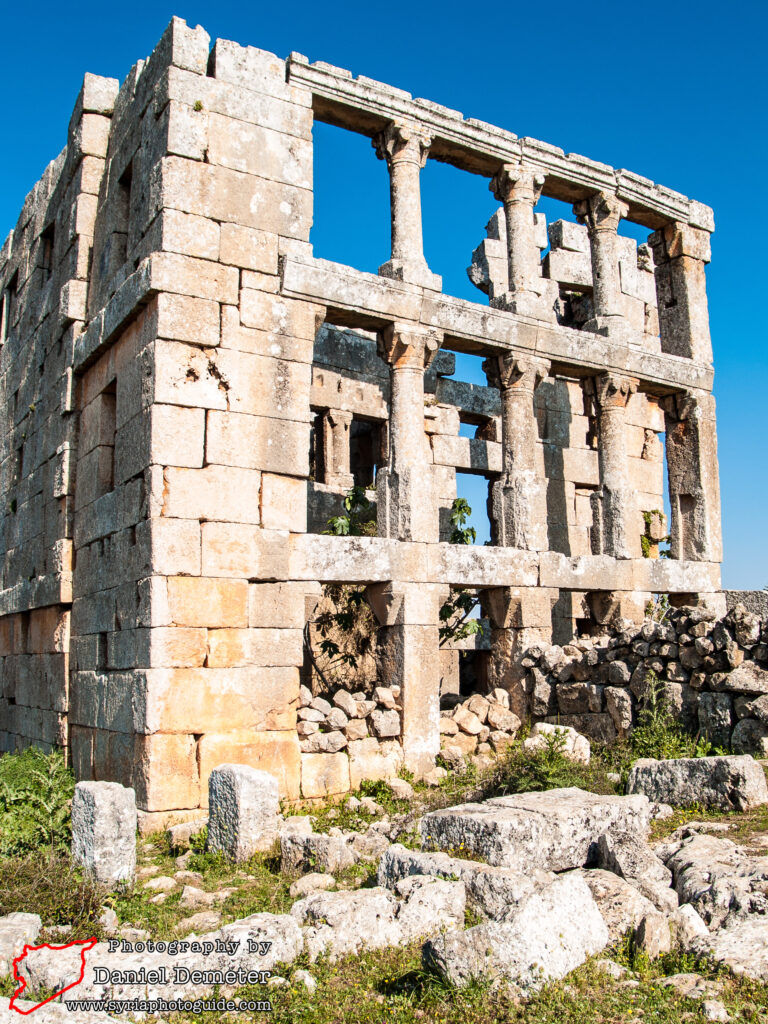
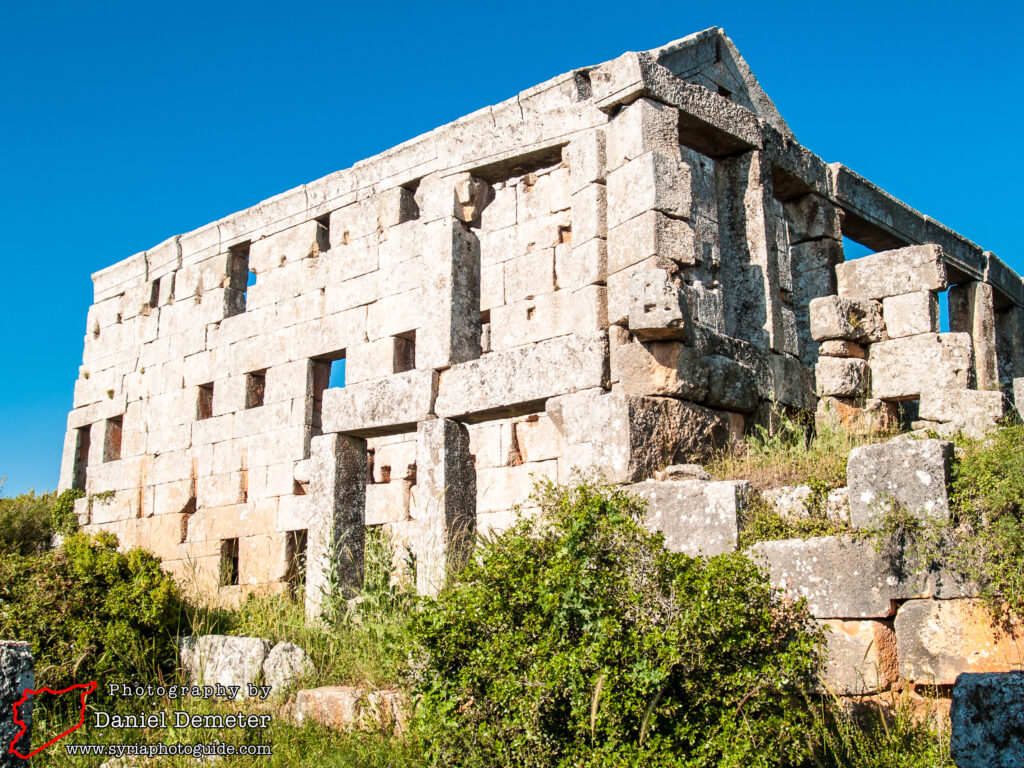
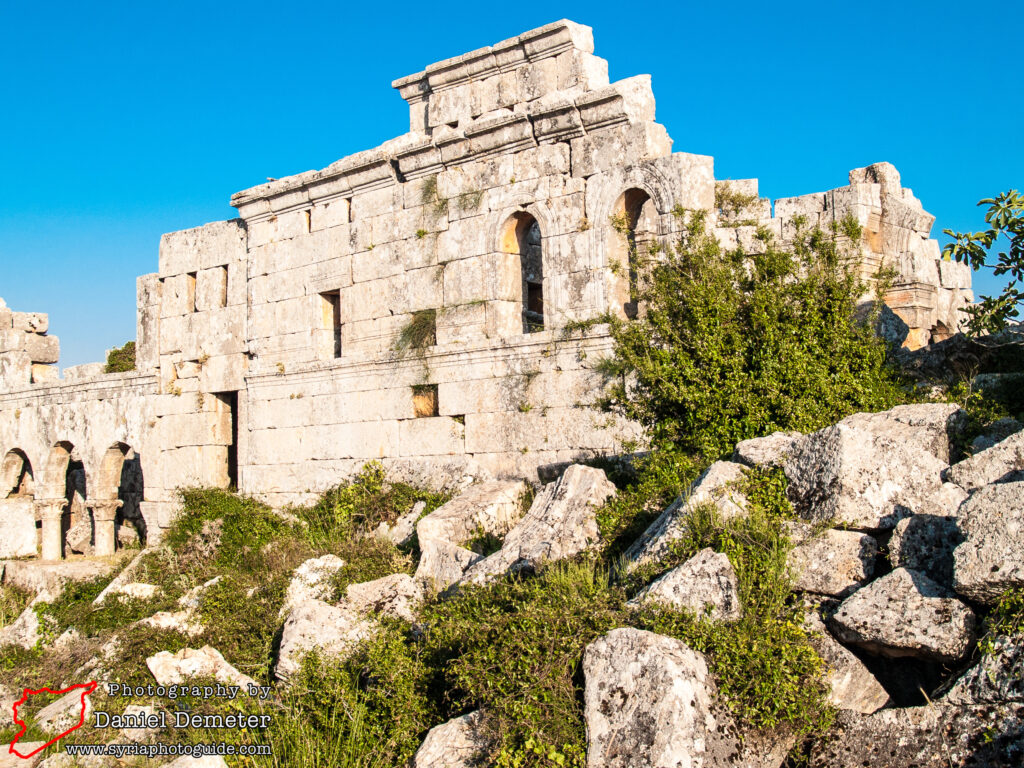
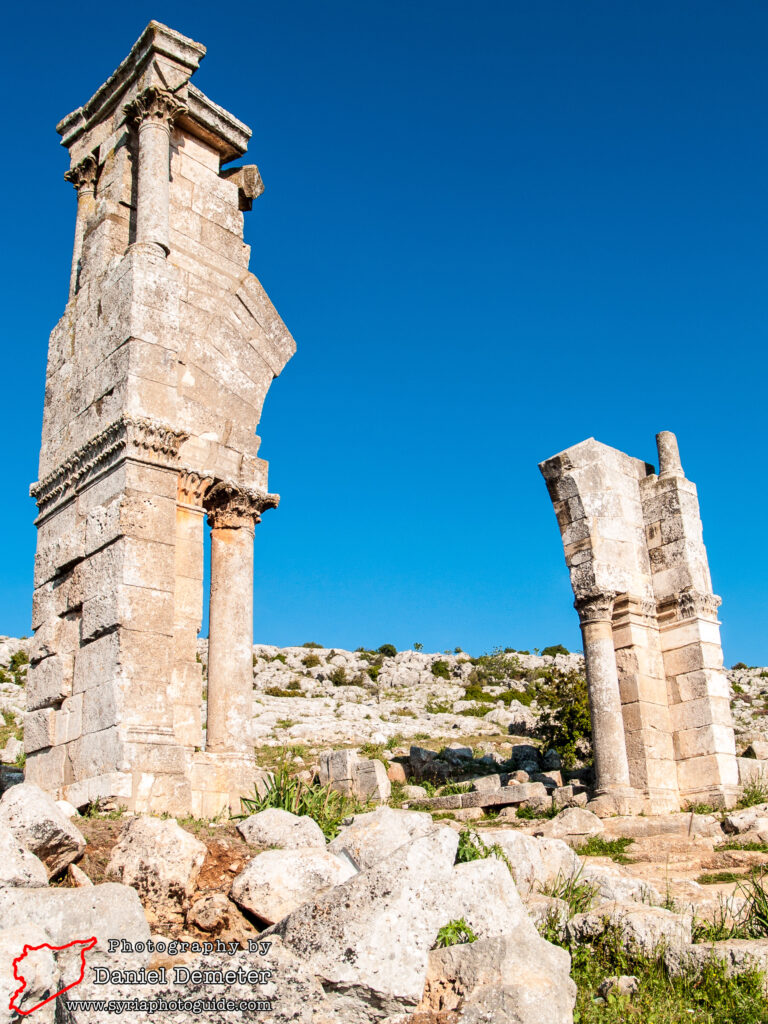
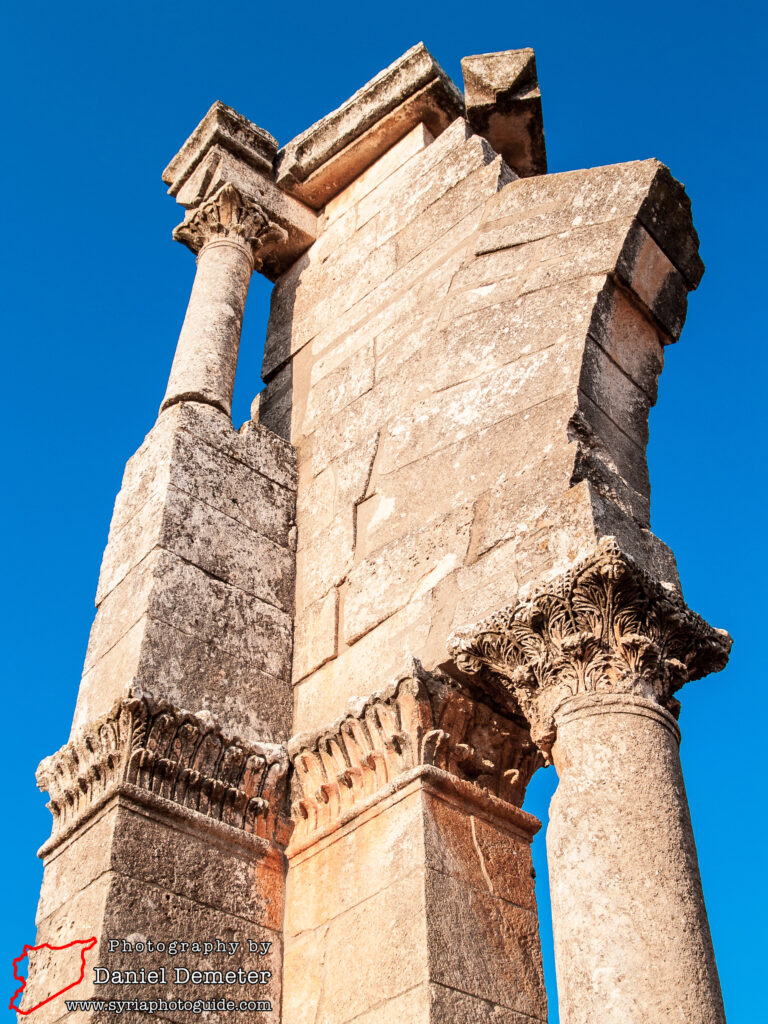
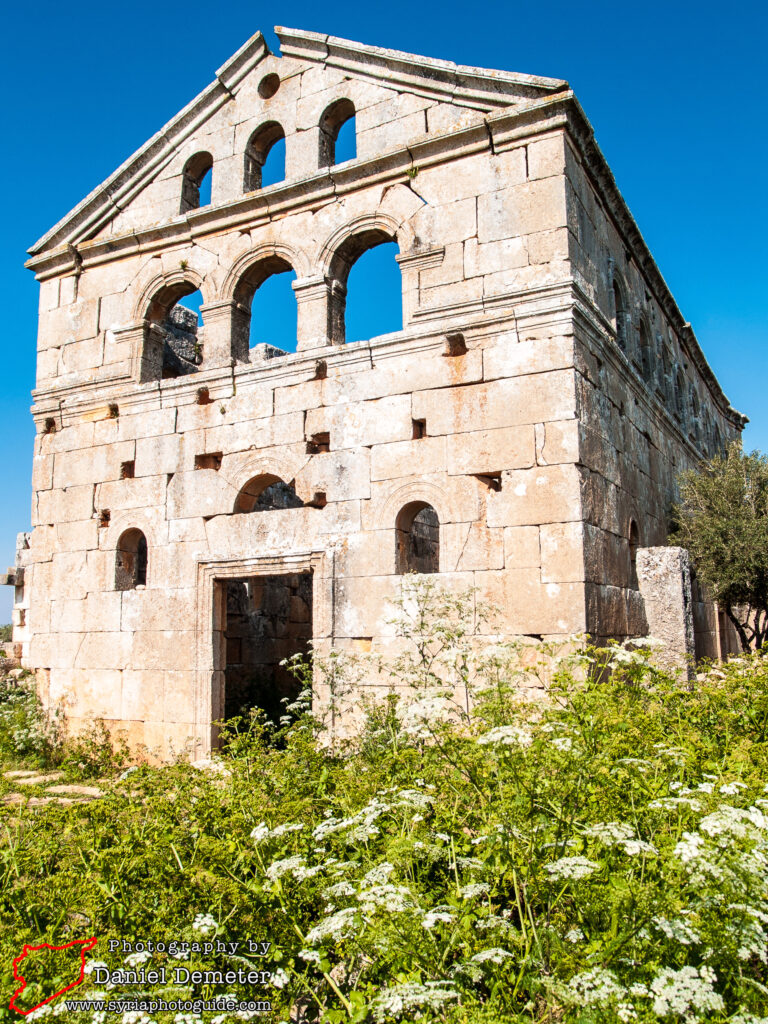
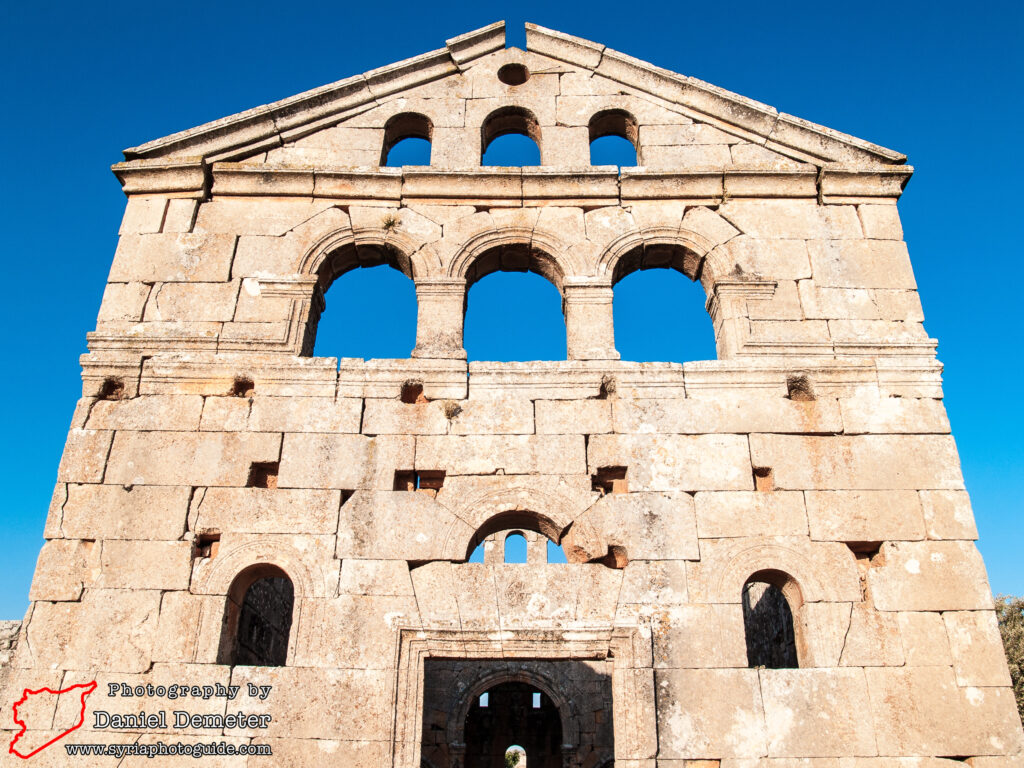
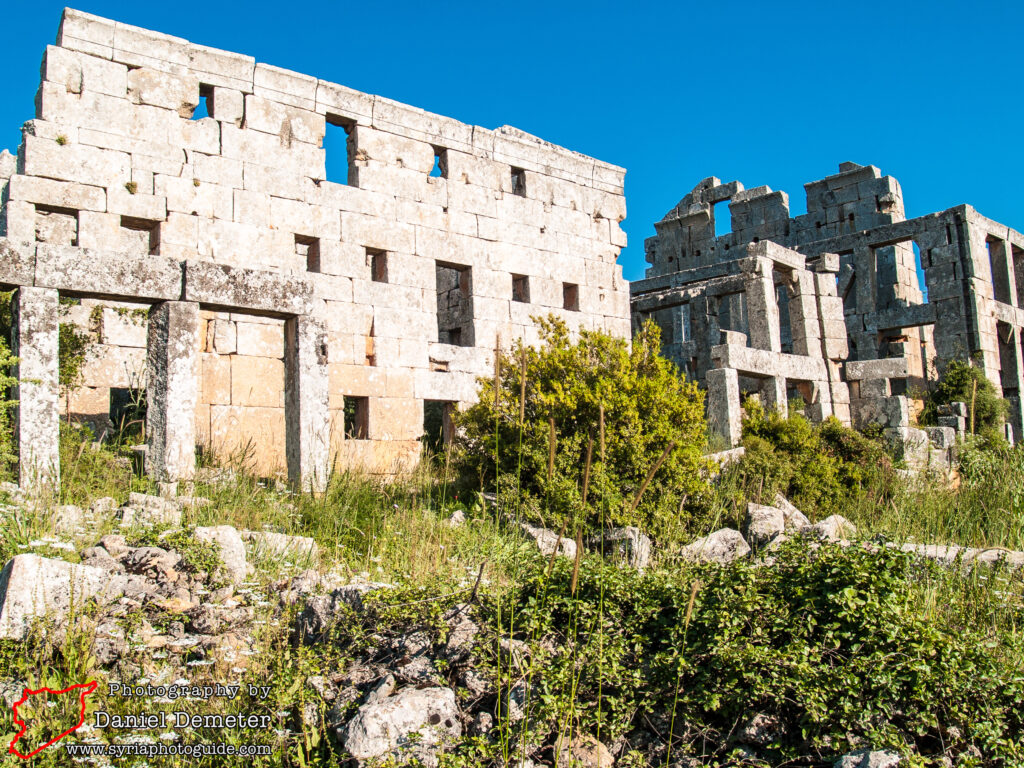
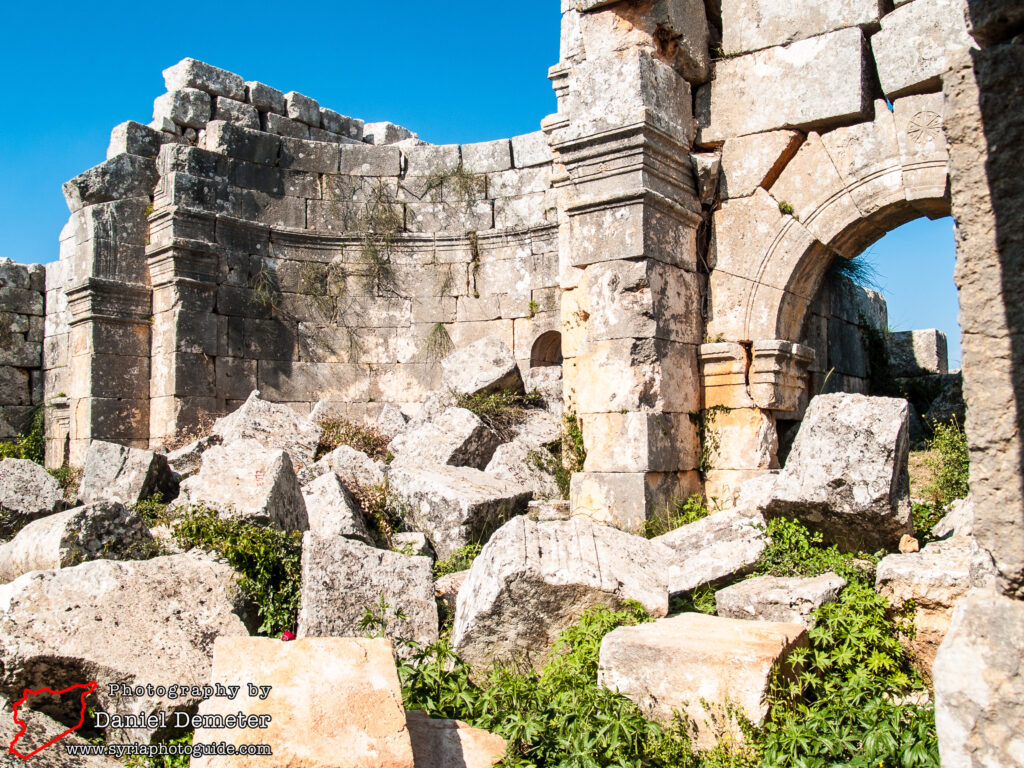
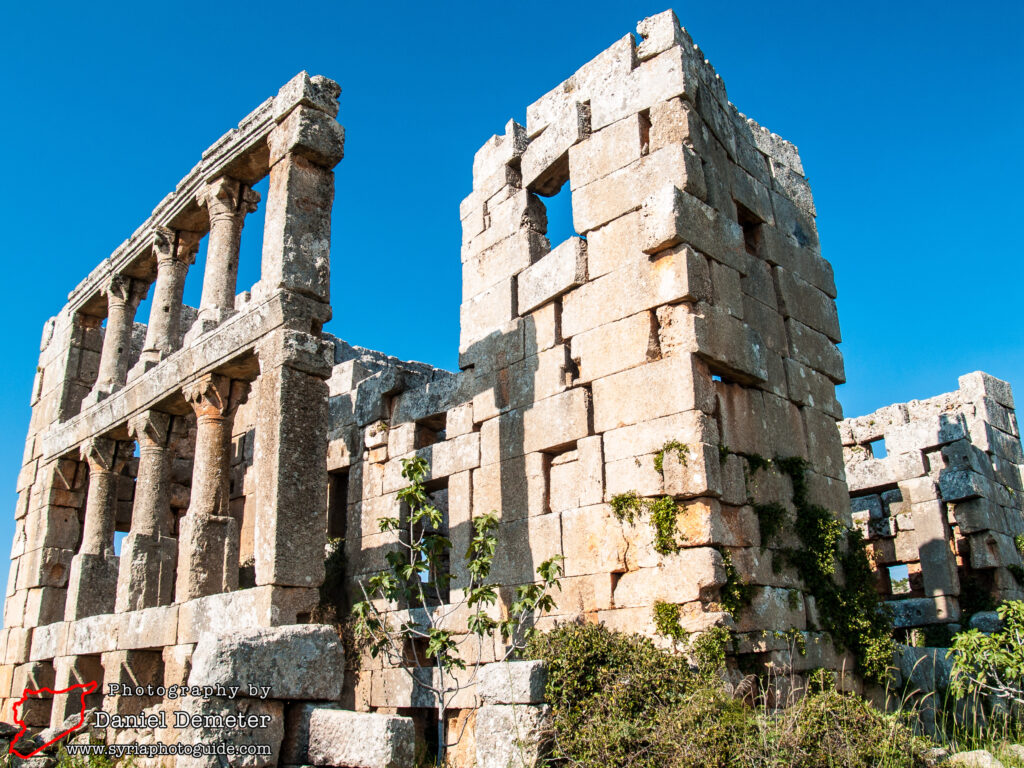
Getting There: Deir Samaan (دير سمعان) is roughly five kilometers north of Darat Azeh (دارة عزة), which has regular microbus connections to Aleppo (حلب). From Darat Azeh (دارة عزة), head north on the main road towards Qalaat Samaan (قلعة سمعان), passing the road to Qatura (قاطورة) along the way. After about four and a half kilometers, the road will fork. The left fork heads to Afrin (عفرين), while continuing straight ahead will take you to Qalaat Samaan (قلعة سمعان). Follow the road towards Afrin (عفرين) and Deir Samaan (دير سمعان) will be visible just a few hundred meters up the hill. The ruins are spread on both sides of the road, with the churches on the left and the largest inn and monumental arch on the right. If you want to hire a private driver to the site, do so in Darat Azeh (دارة عزة).
Coordinates: 36°19’35.00″N / 36°50’01.00″E
Transliteration Variants: Deir Semaan, Deir Simaan
Rating: 7 / 10
